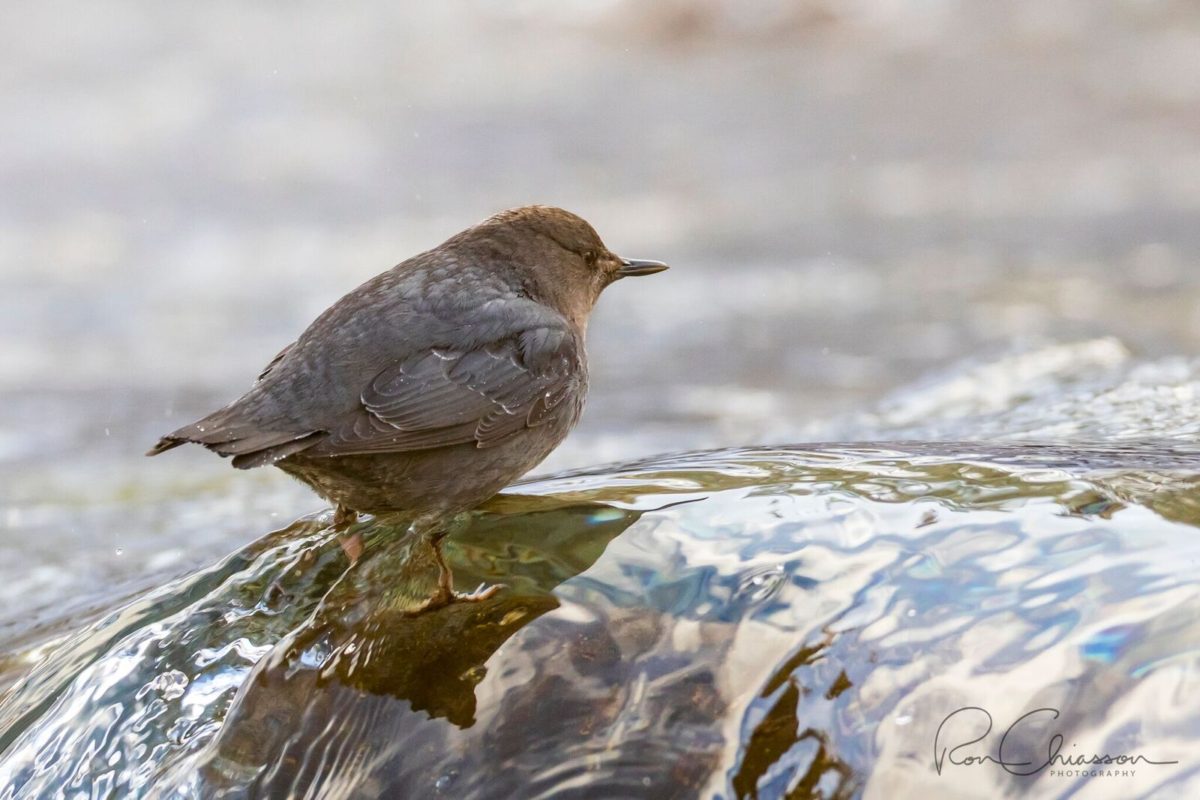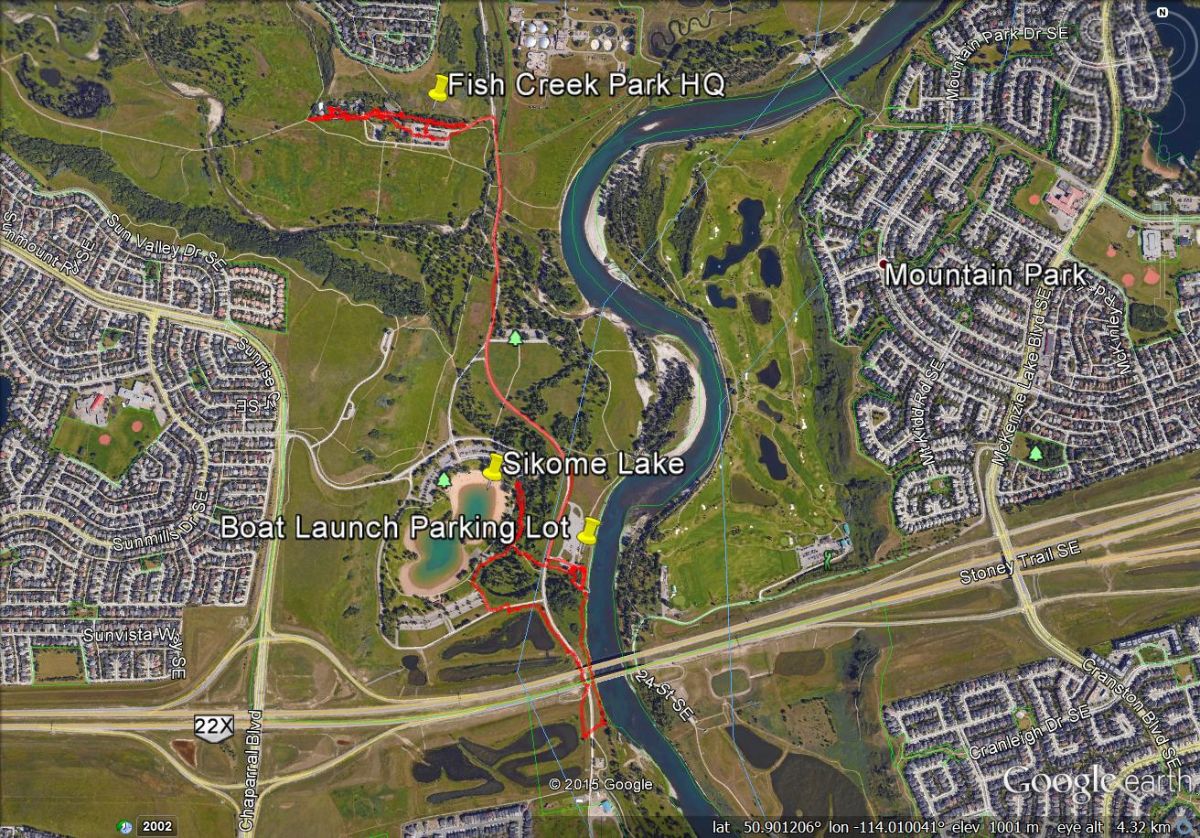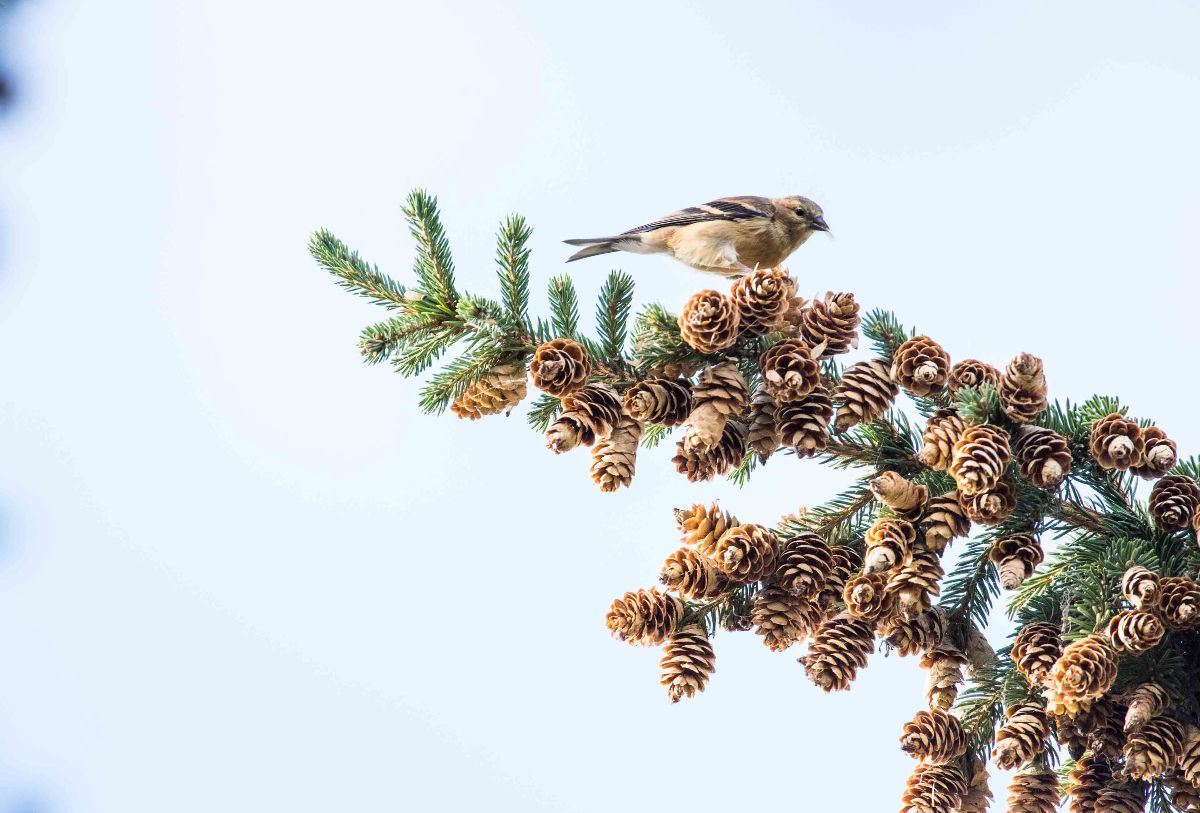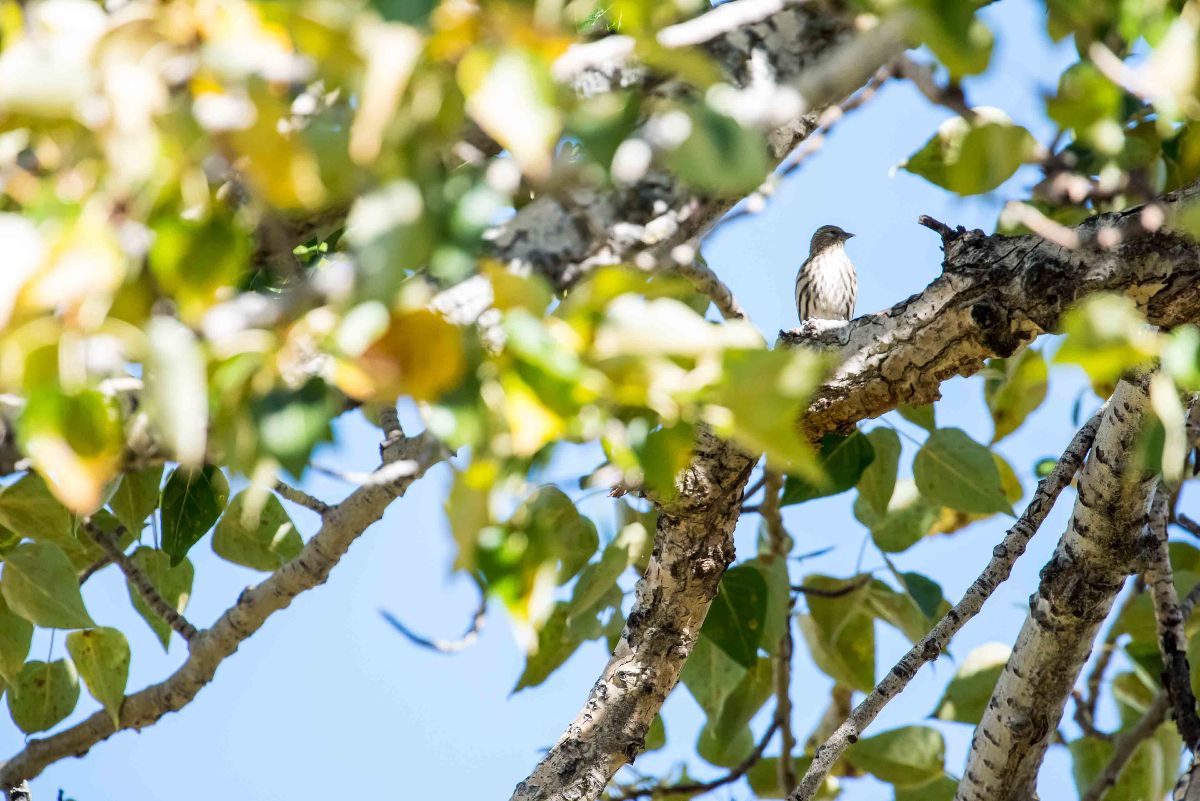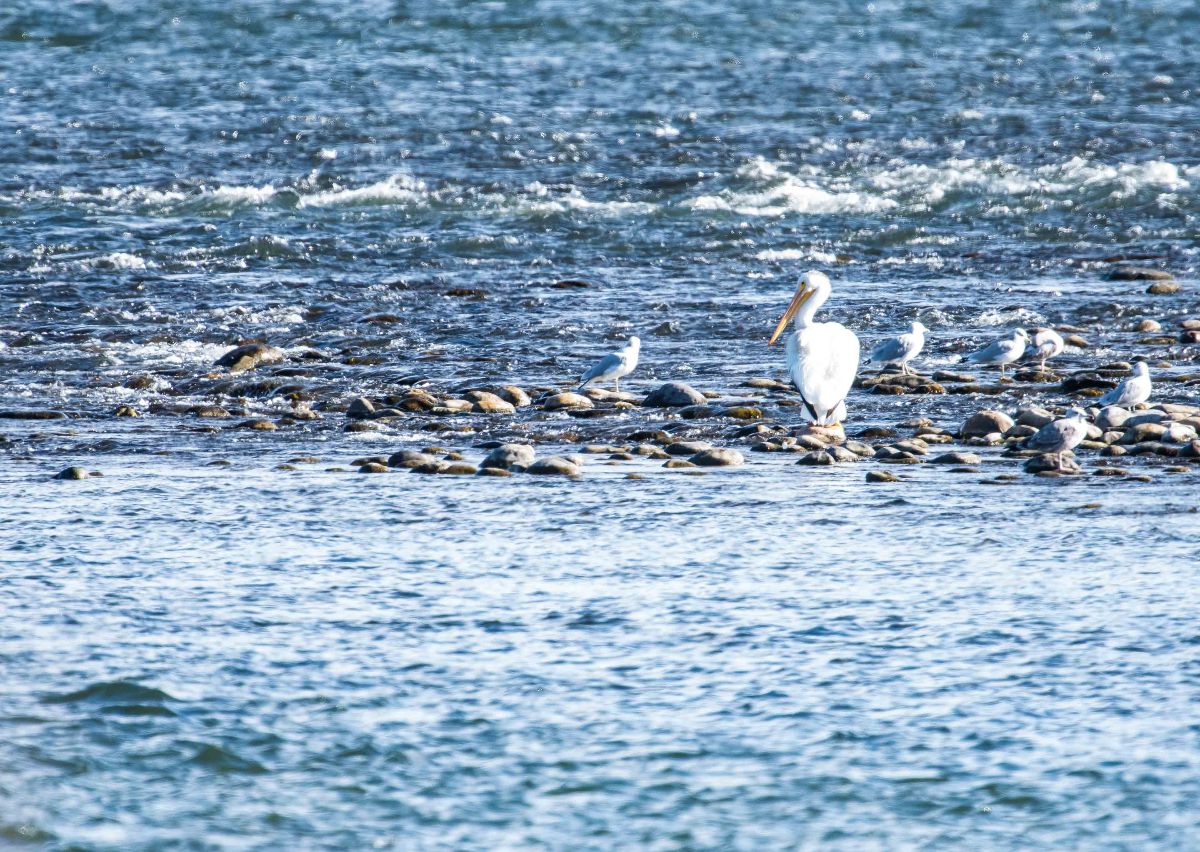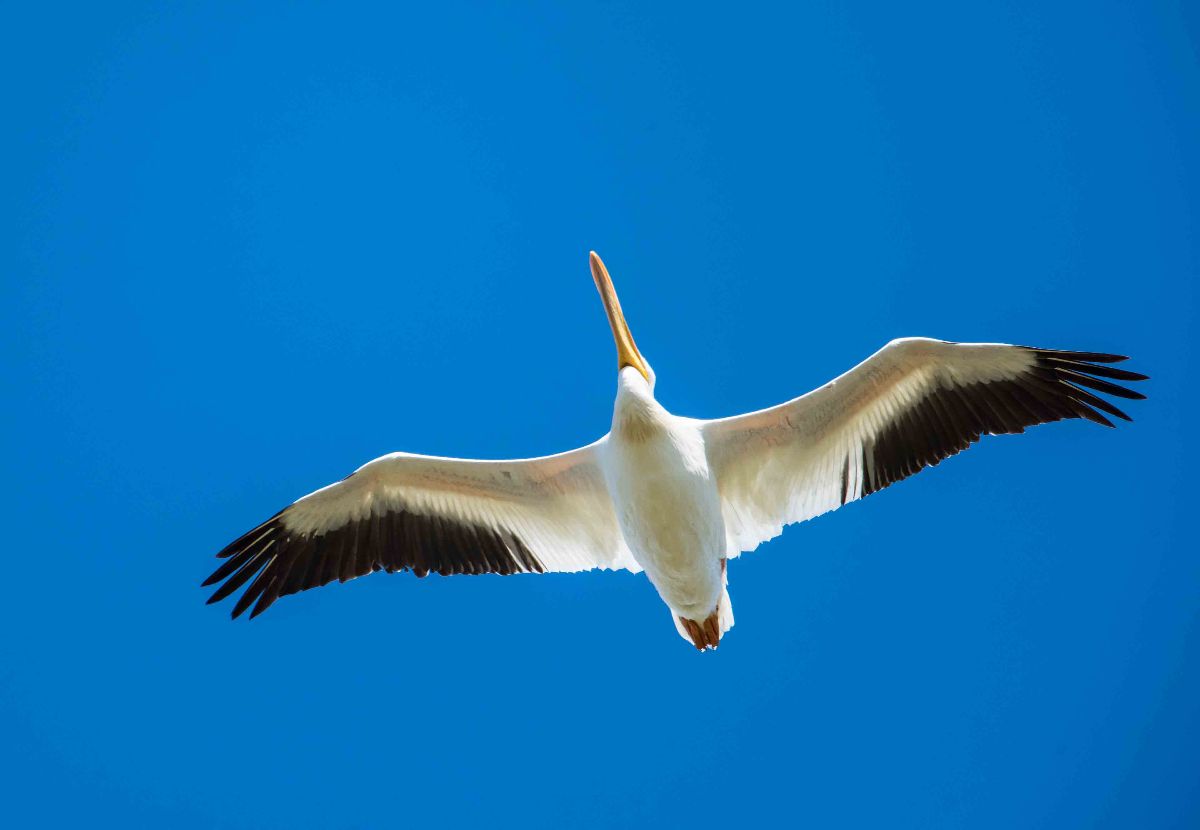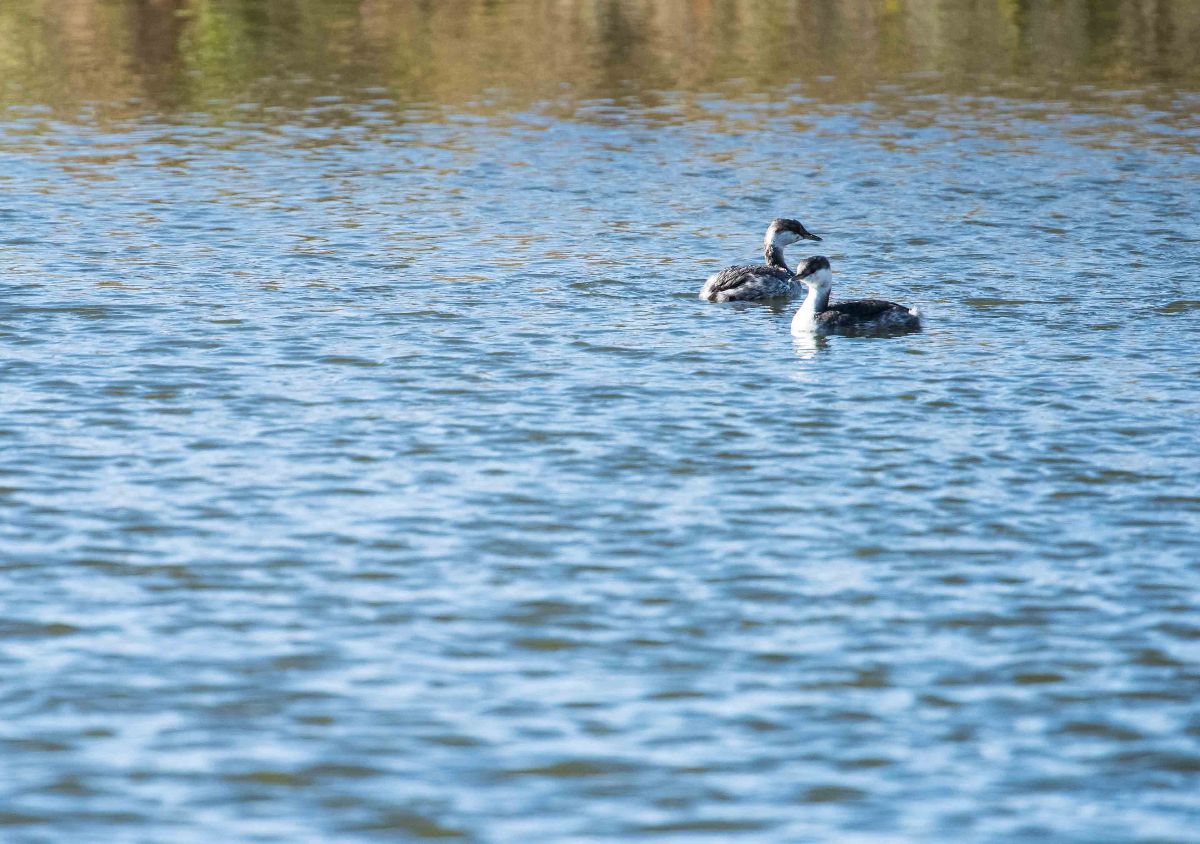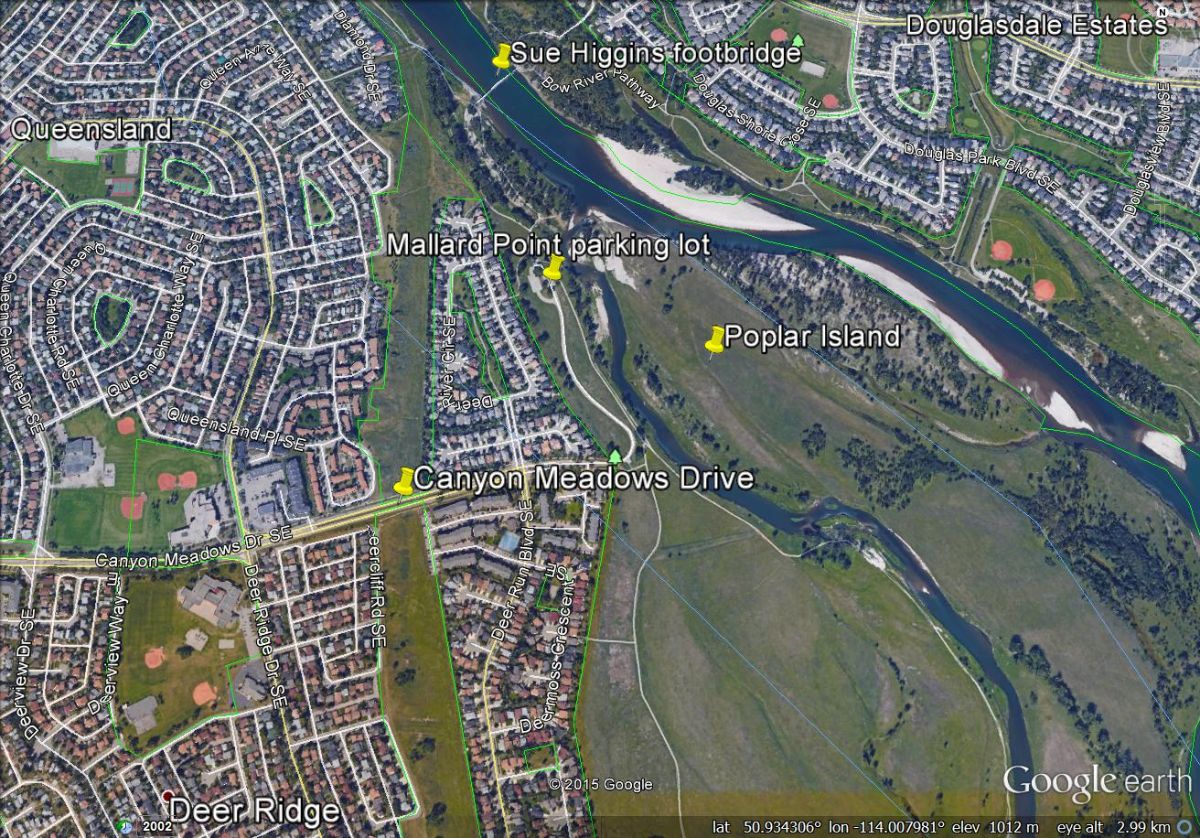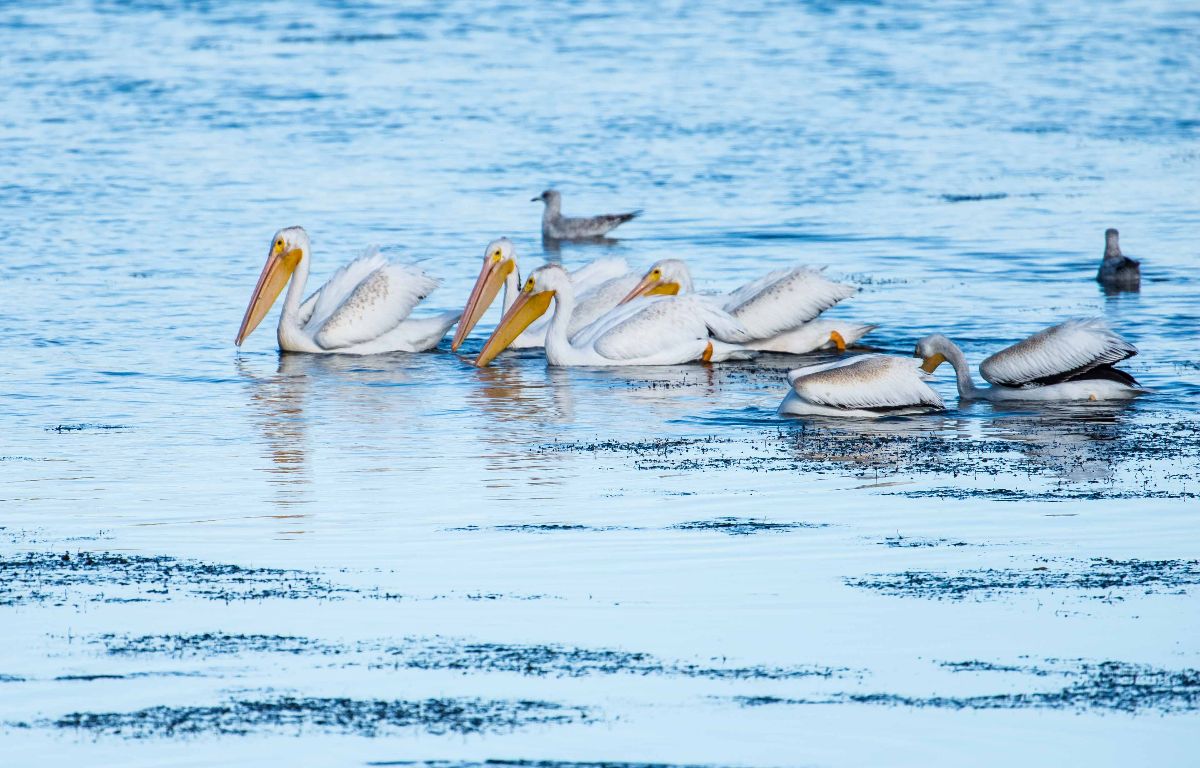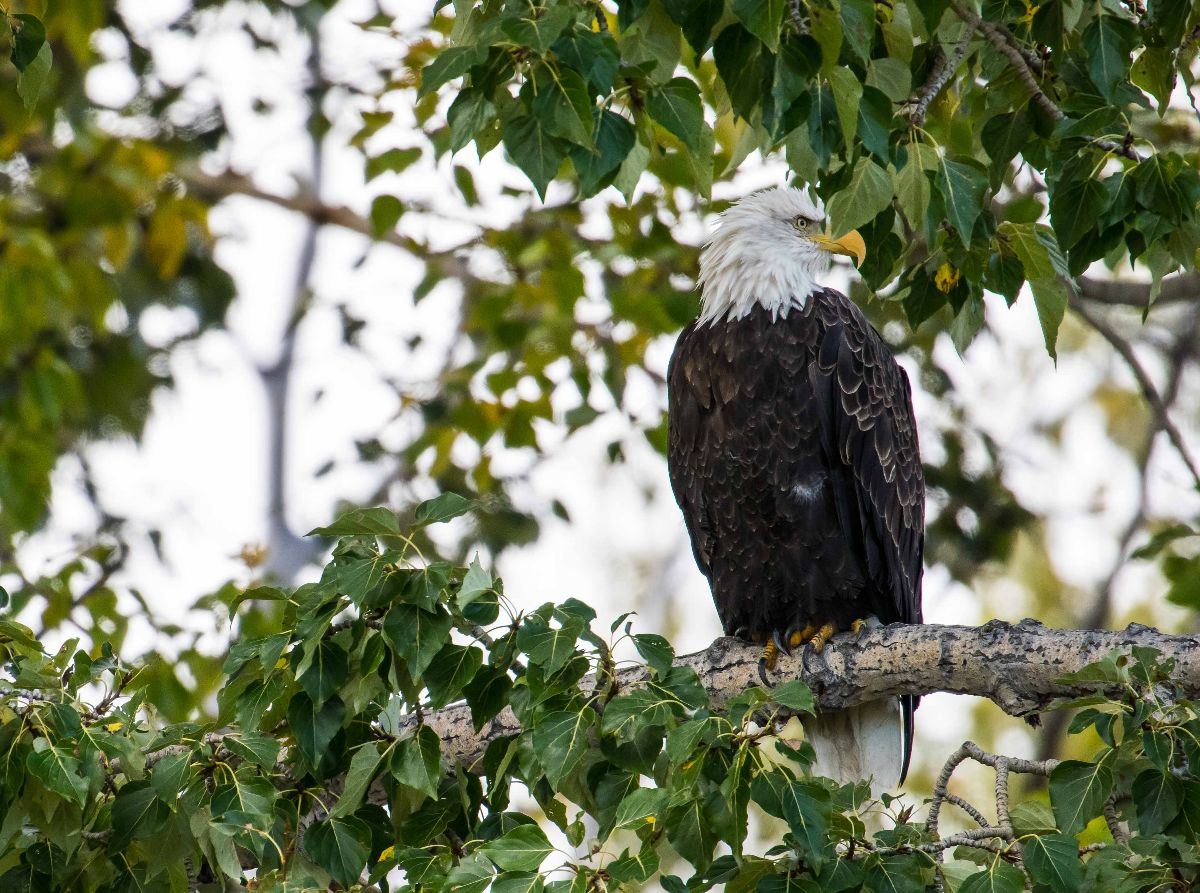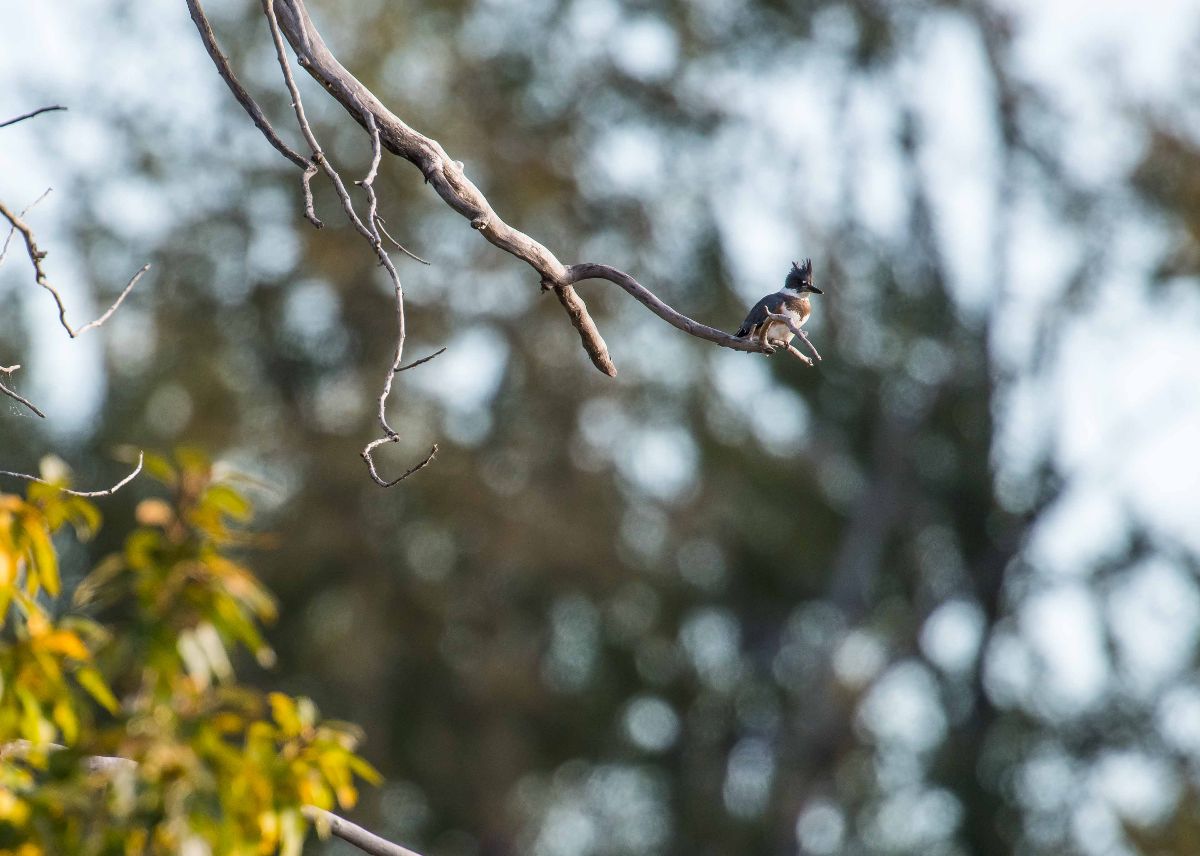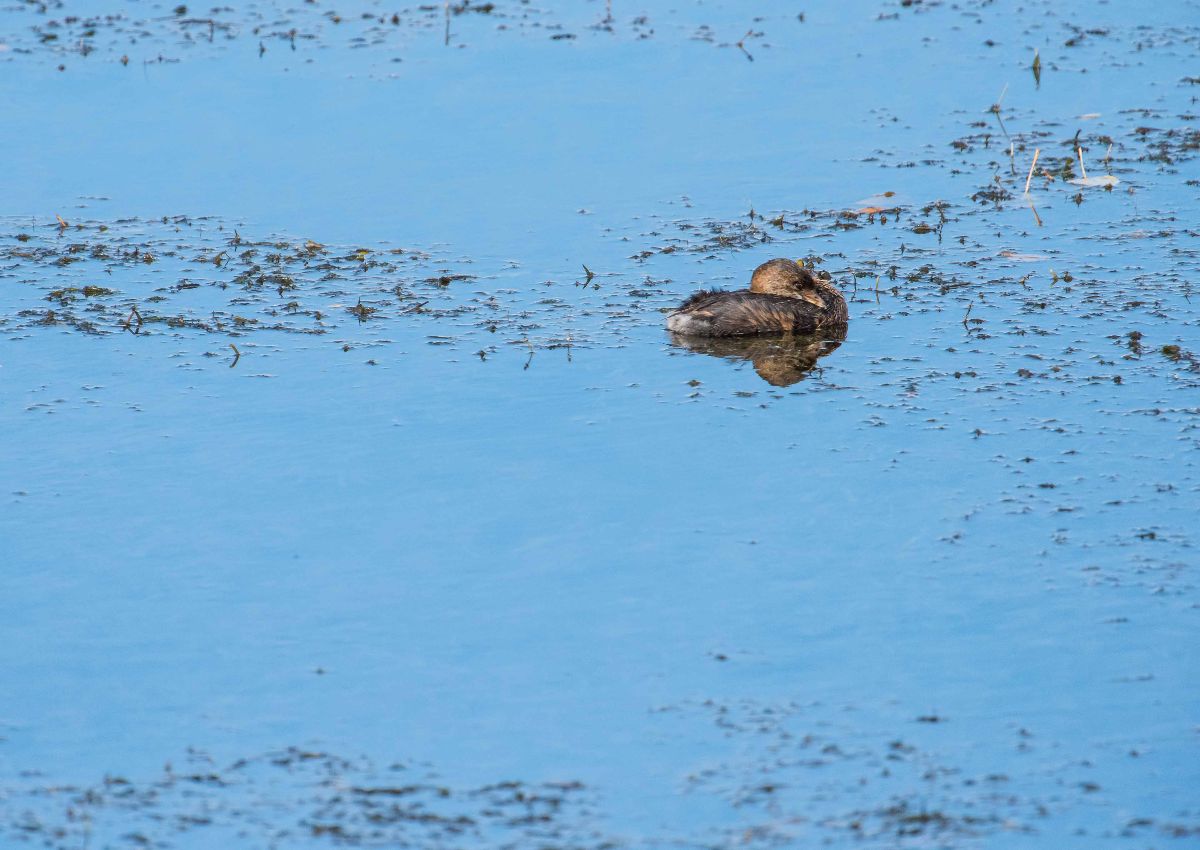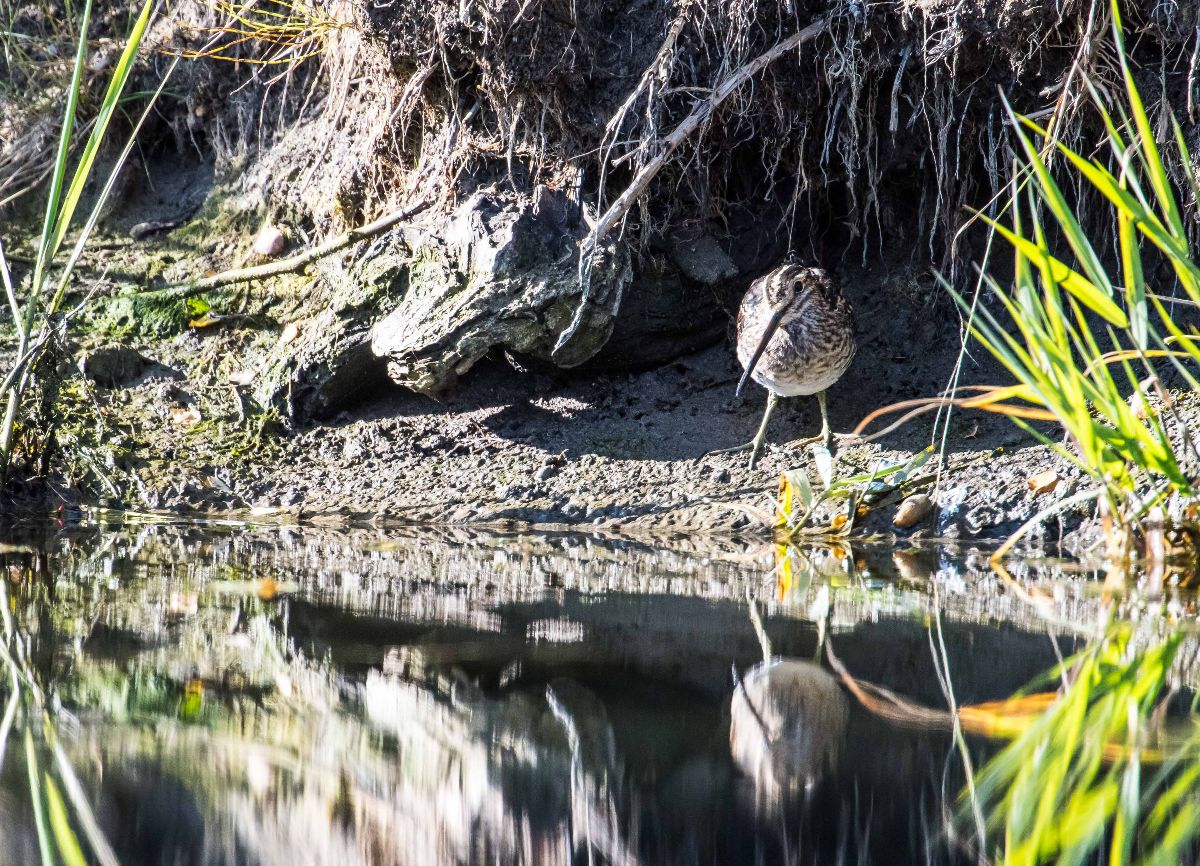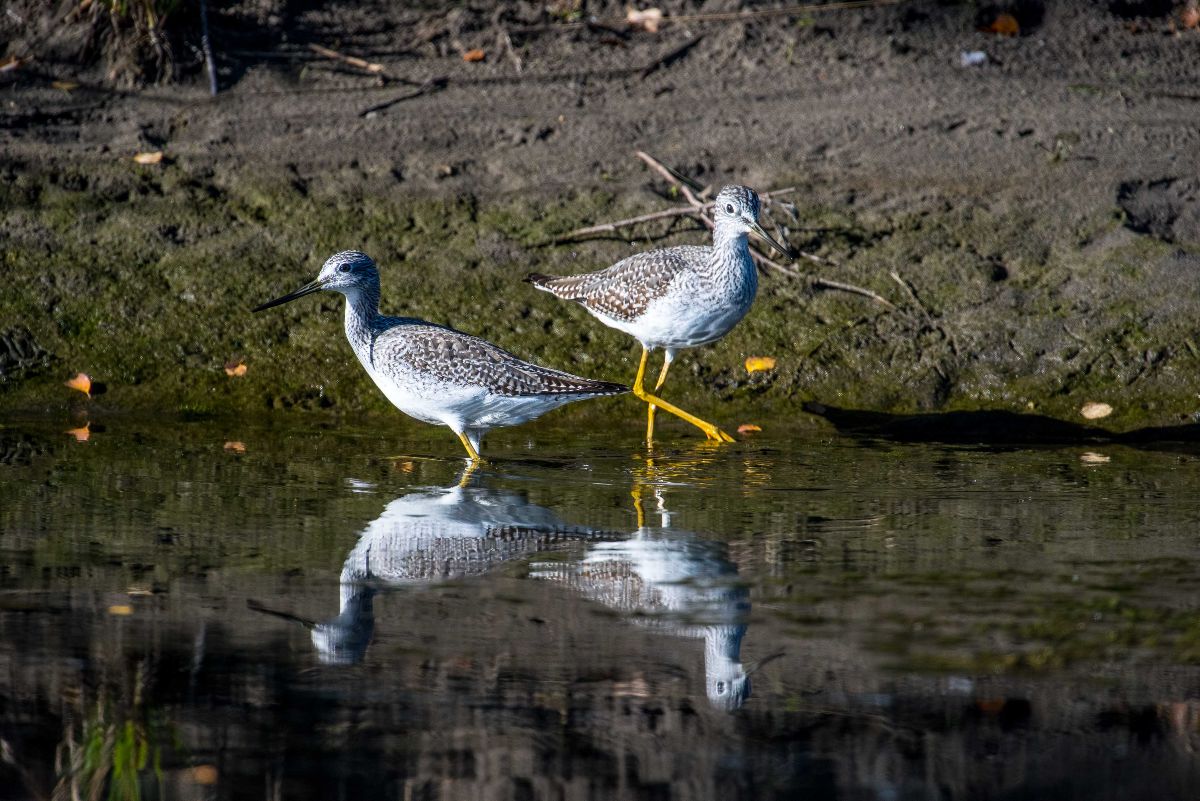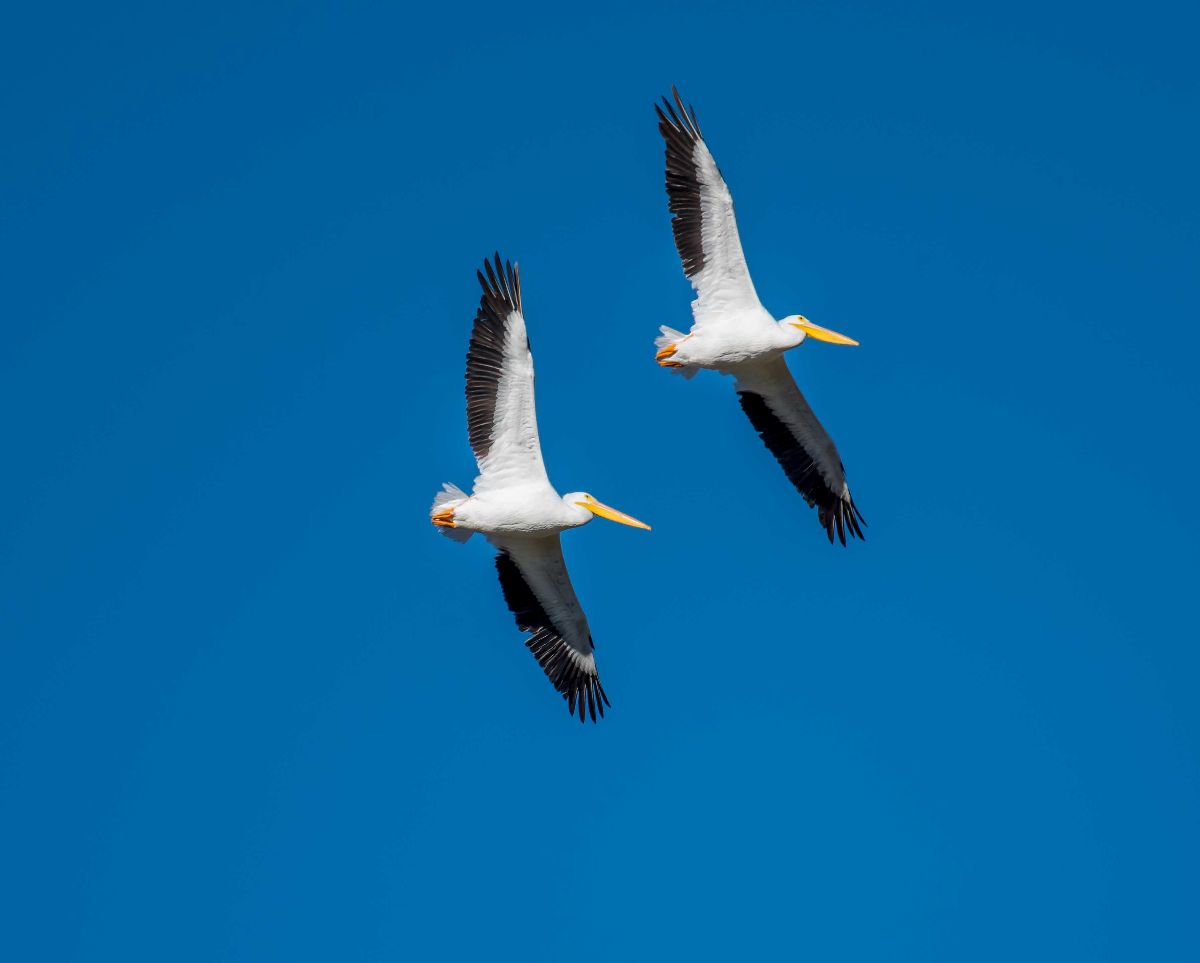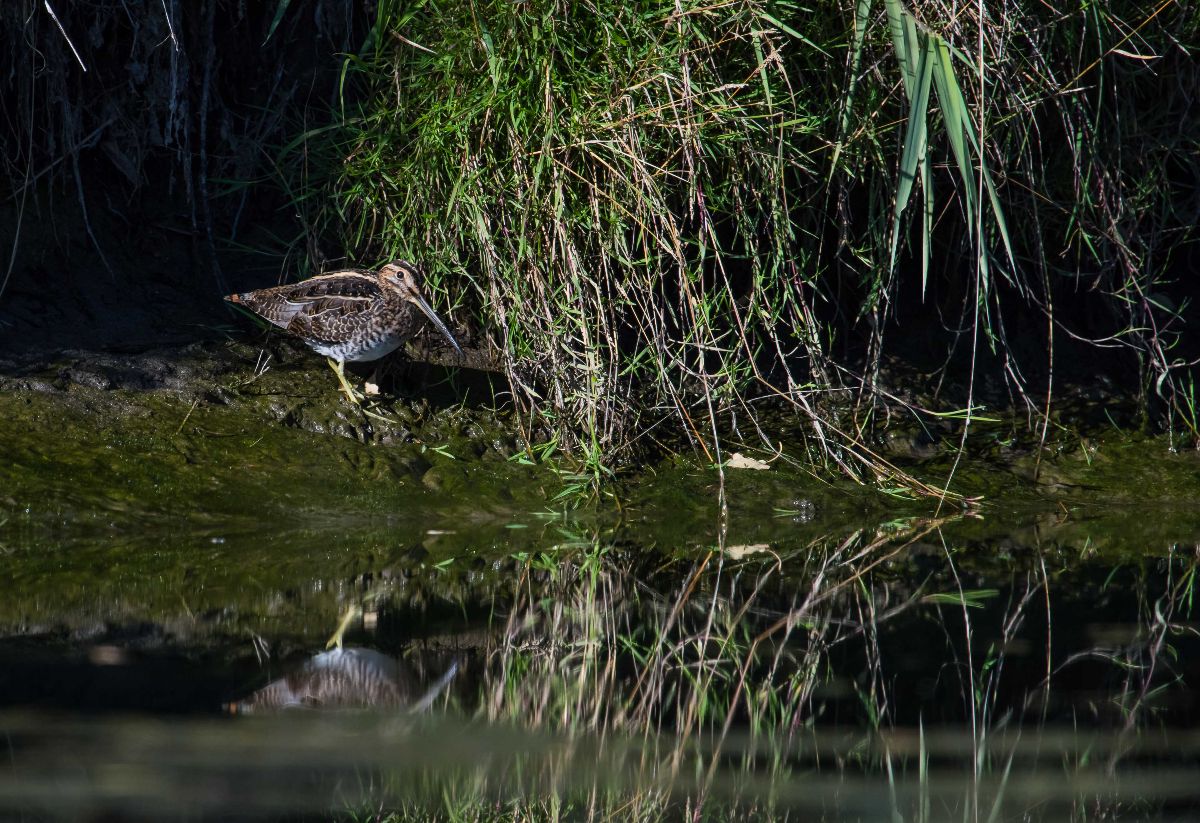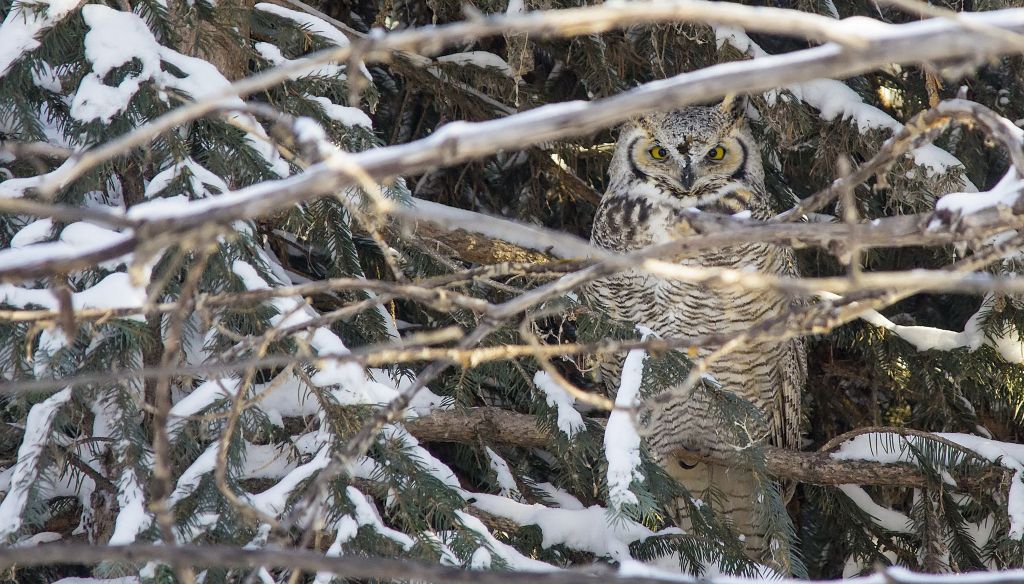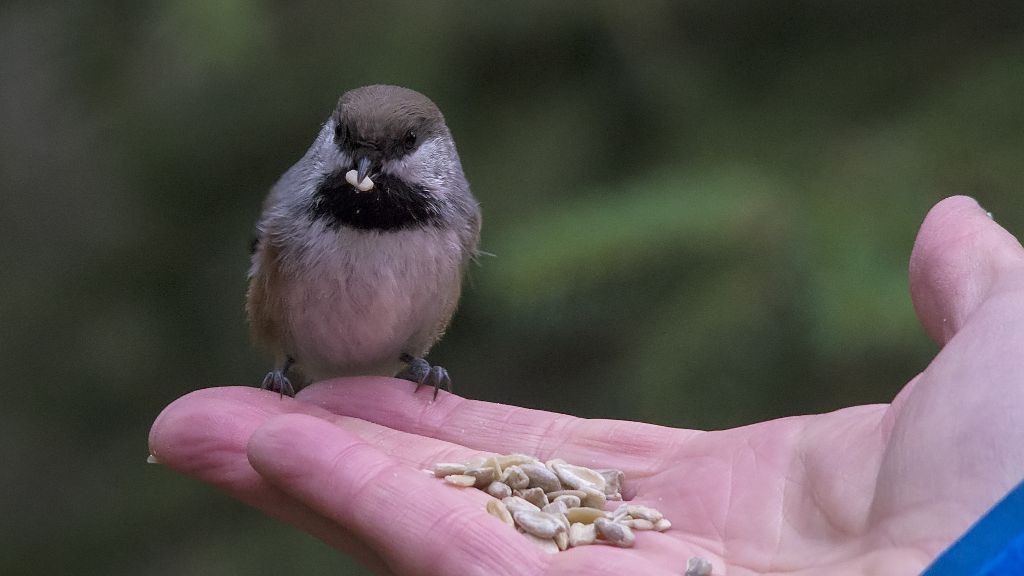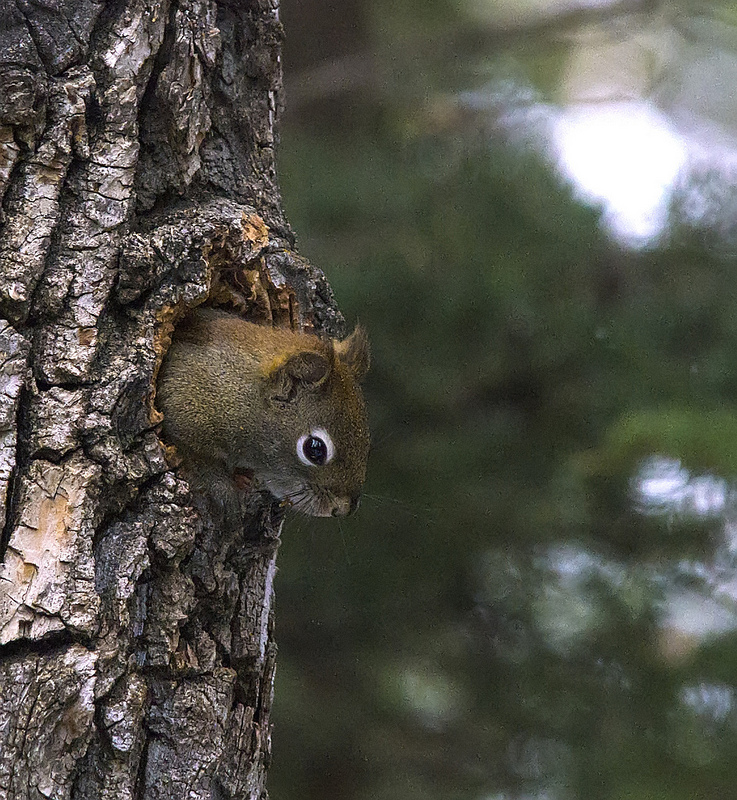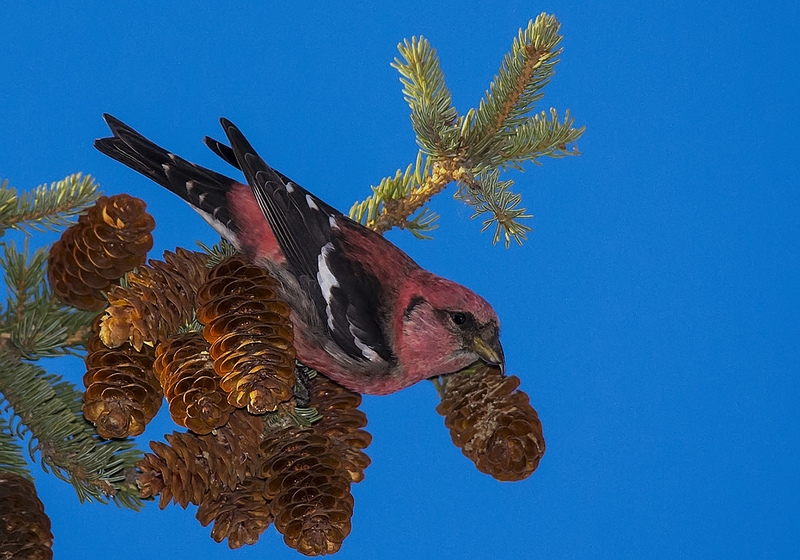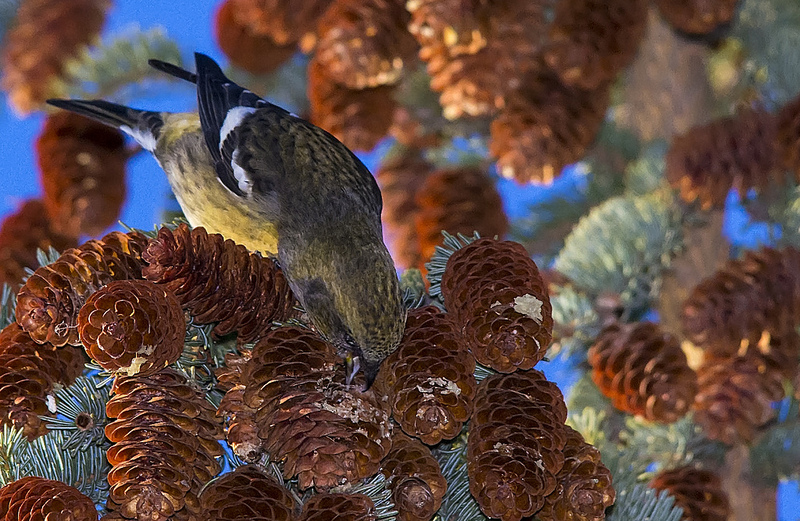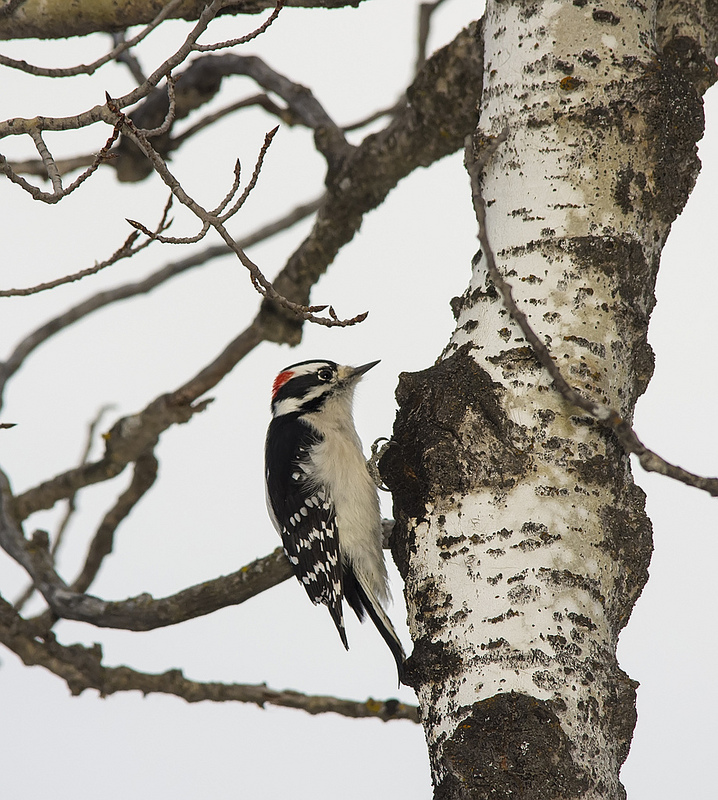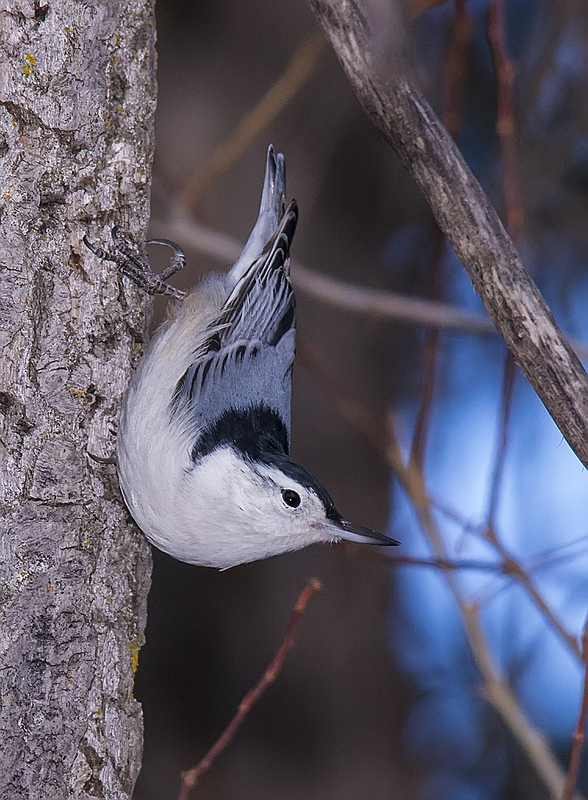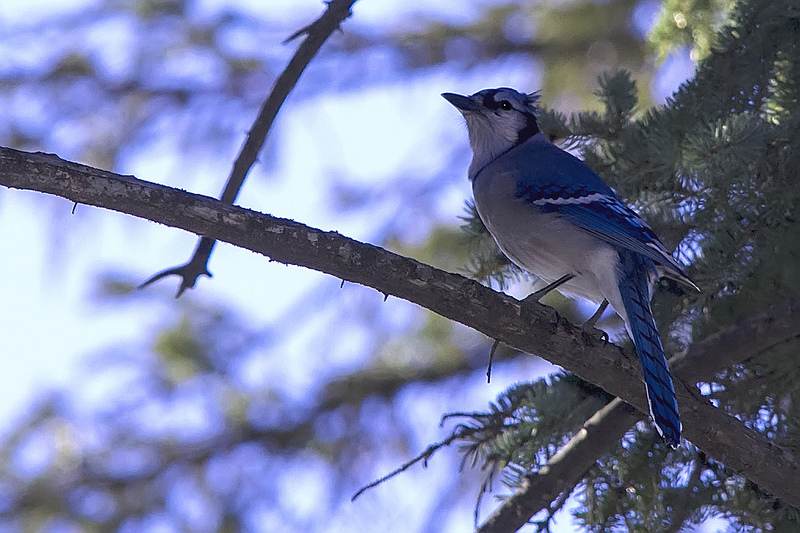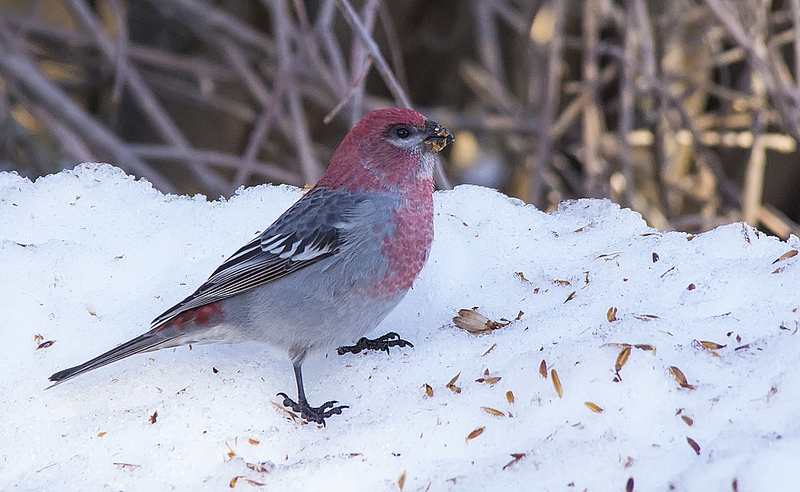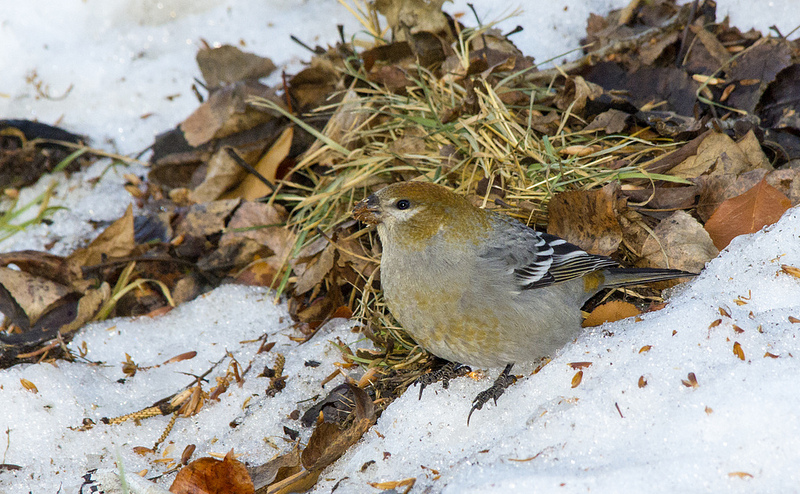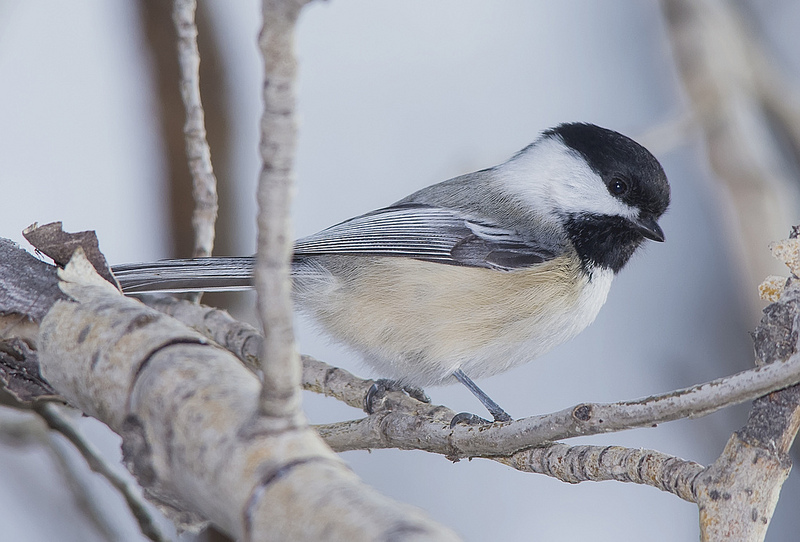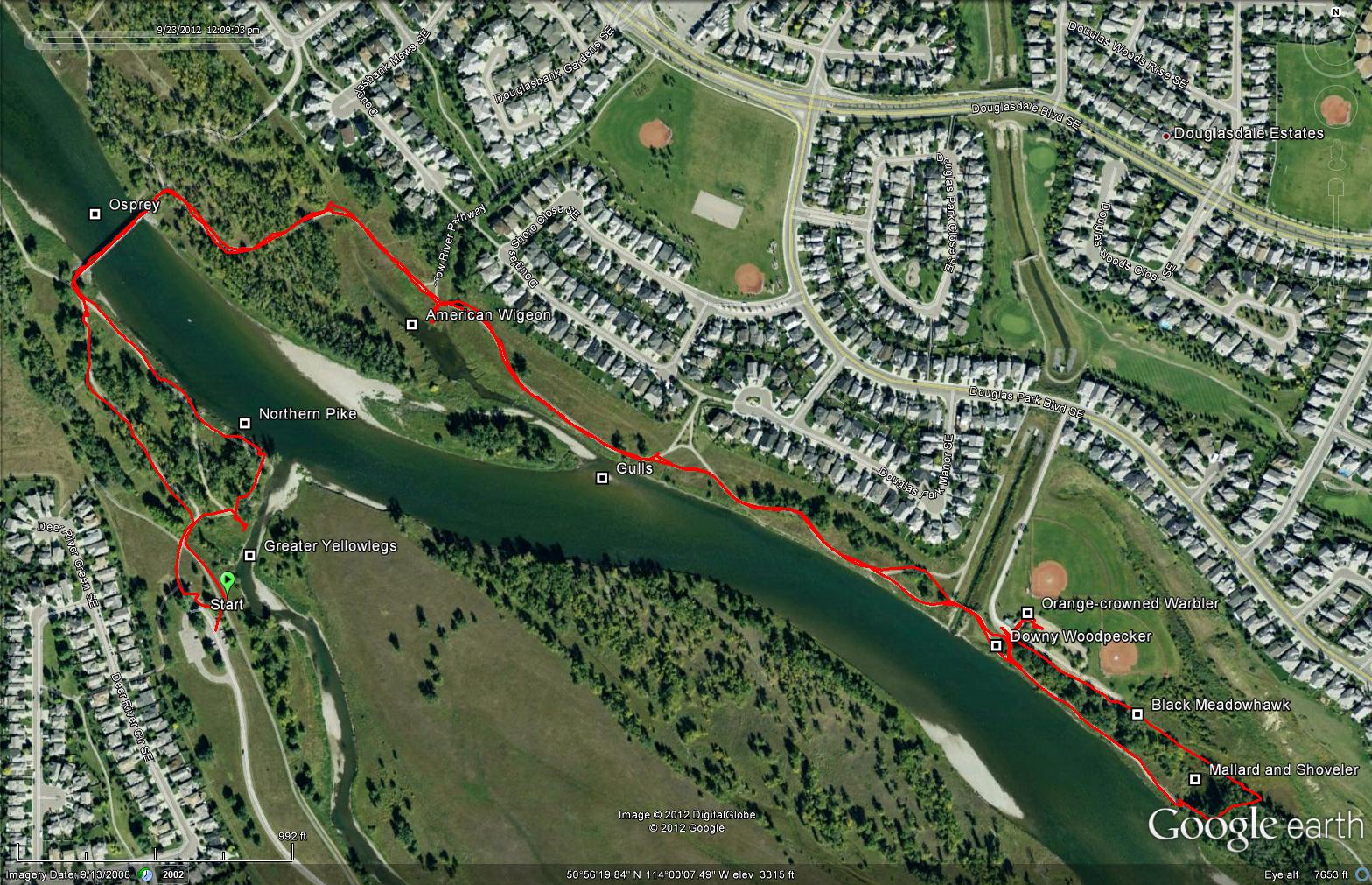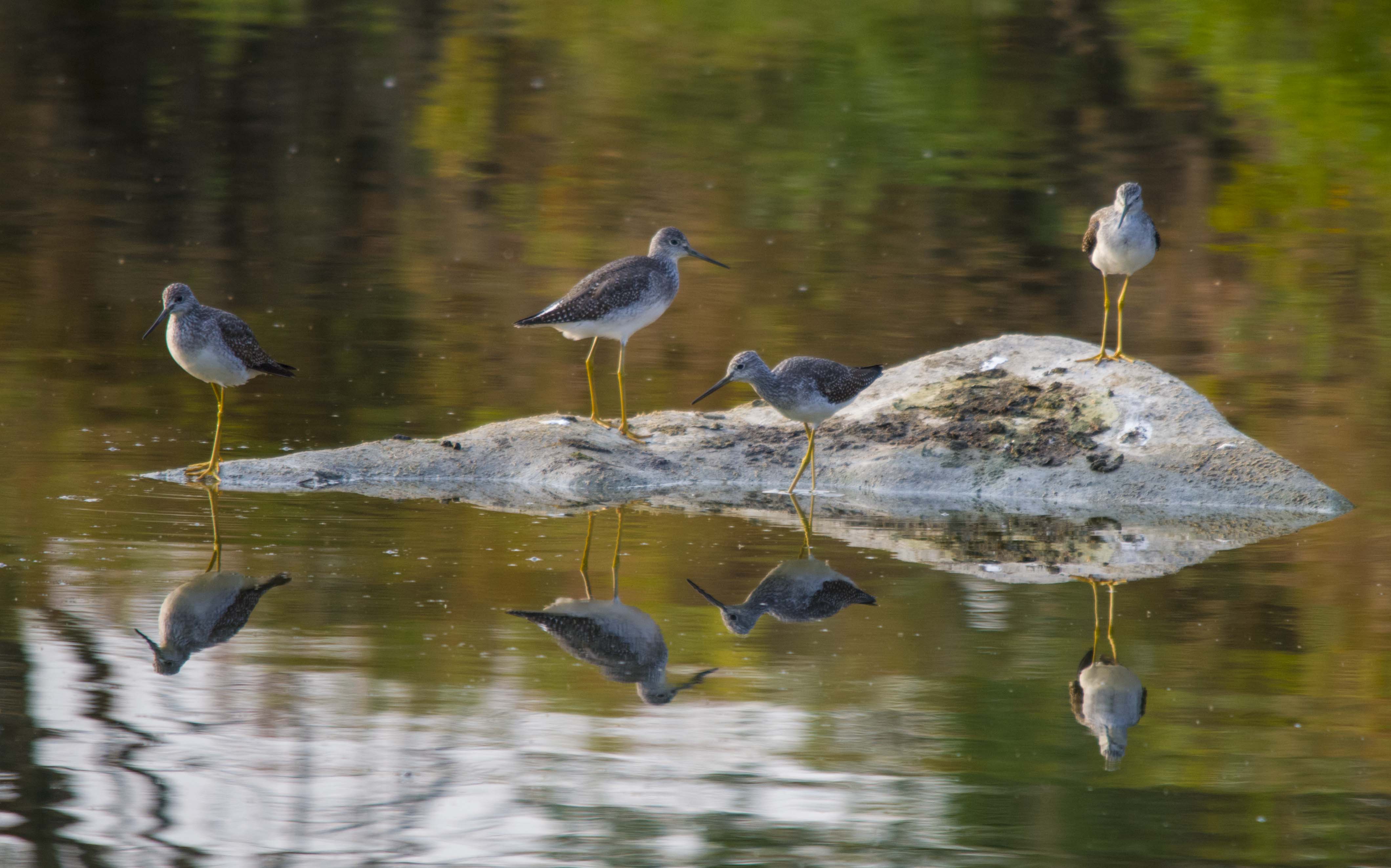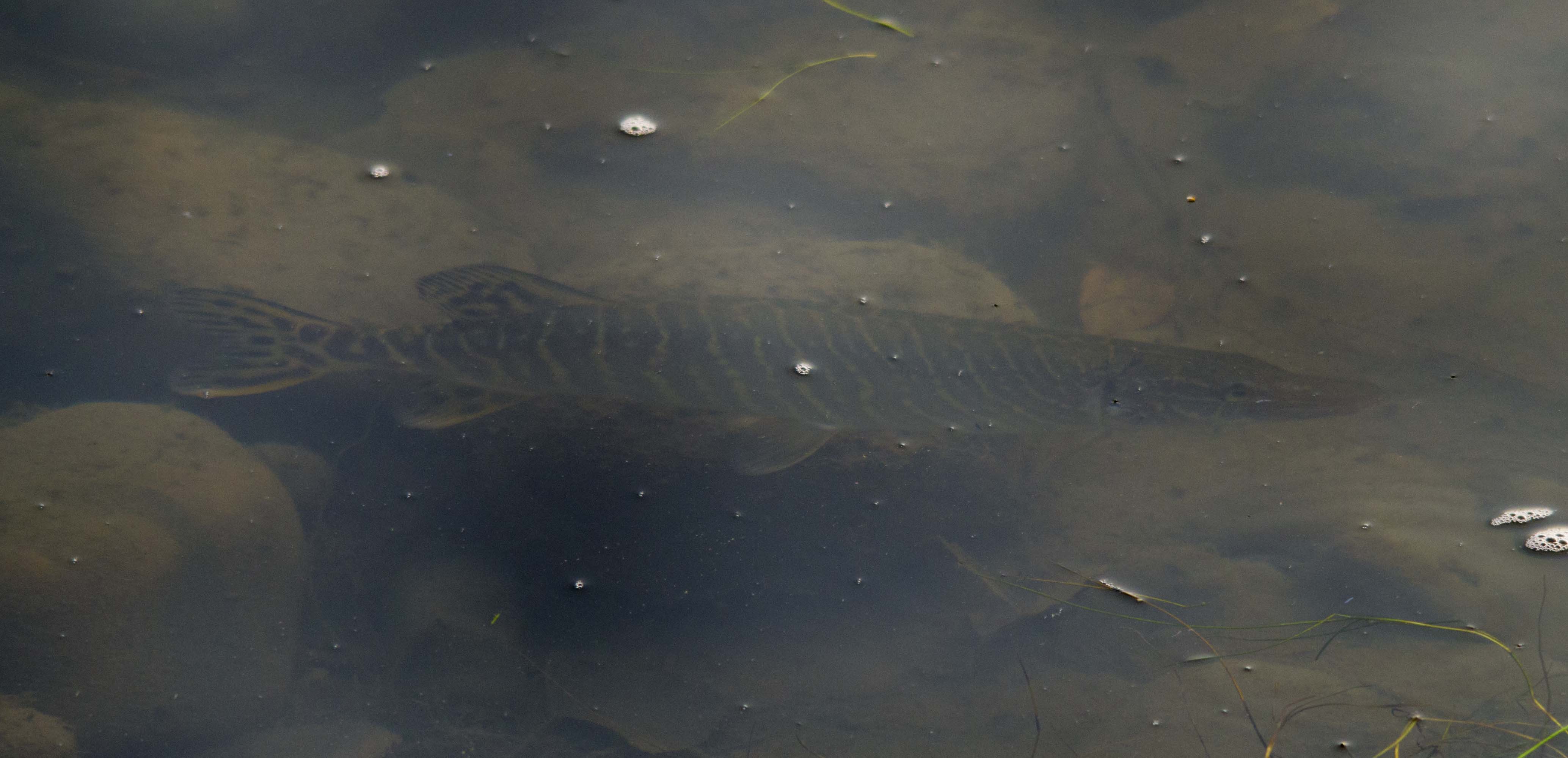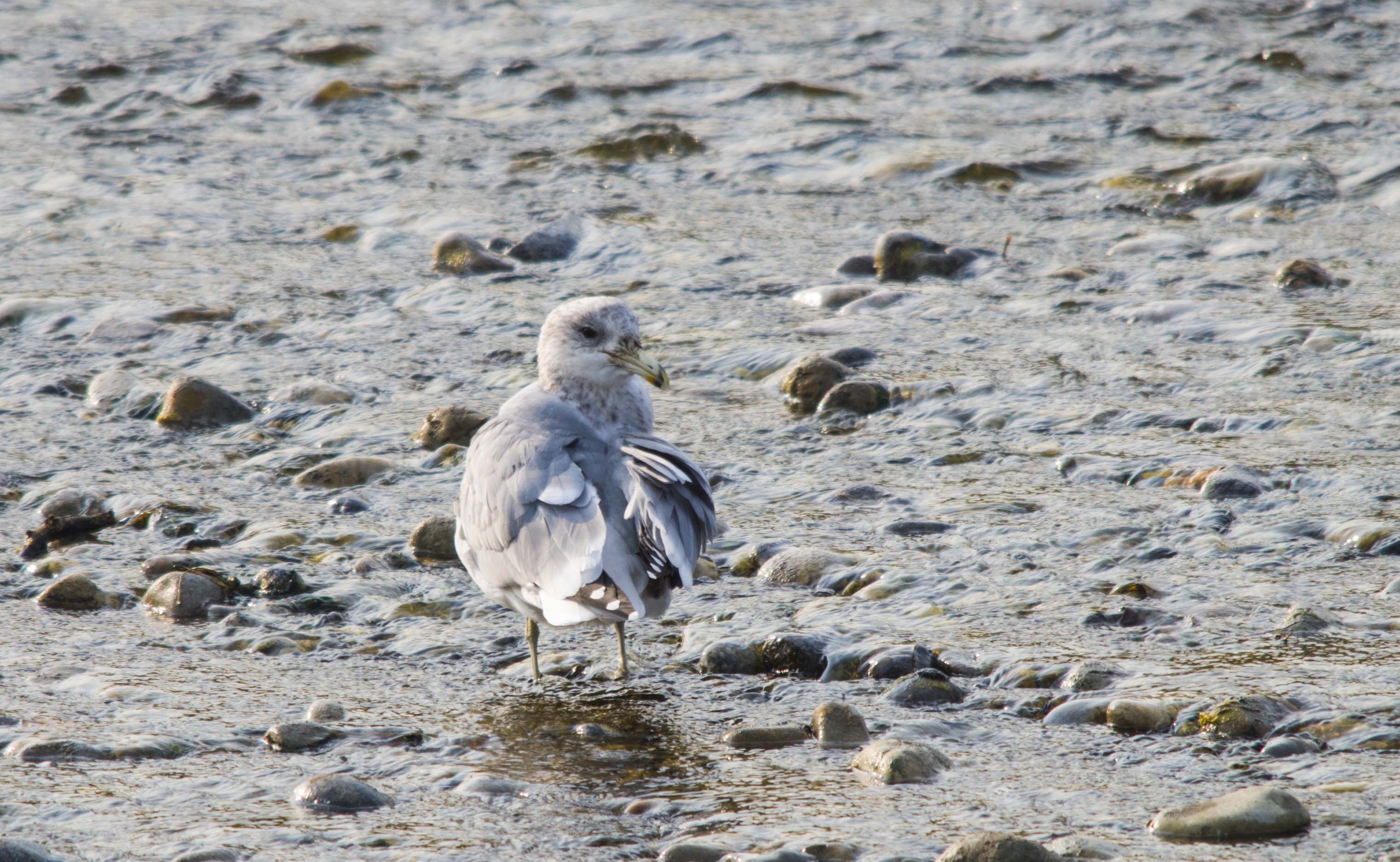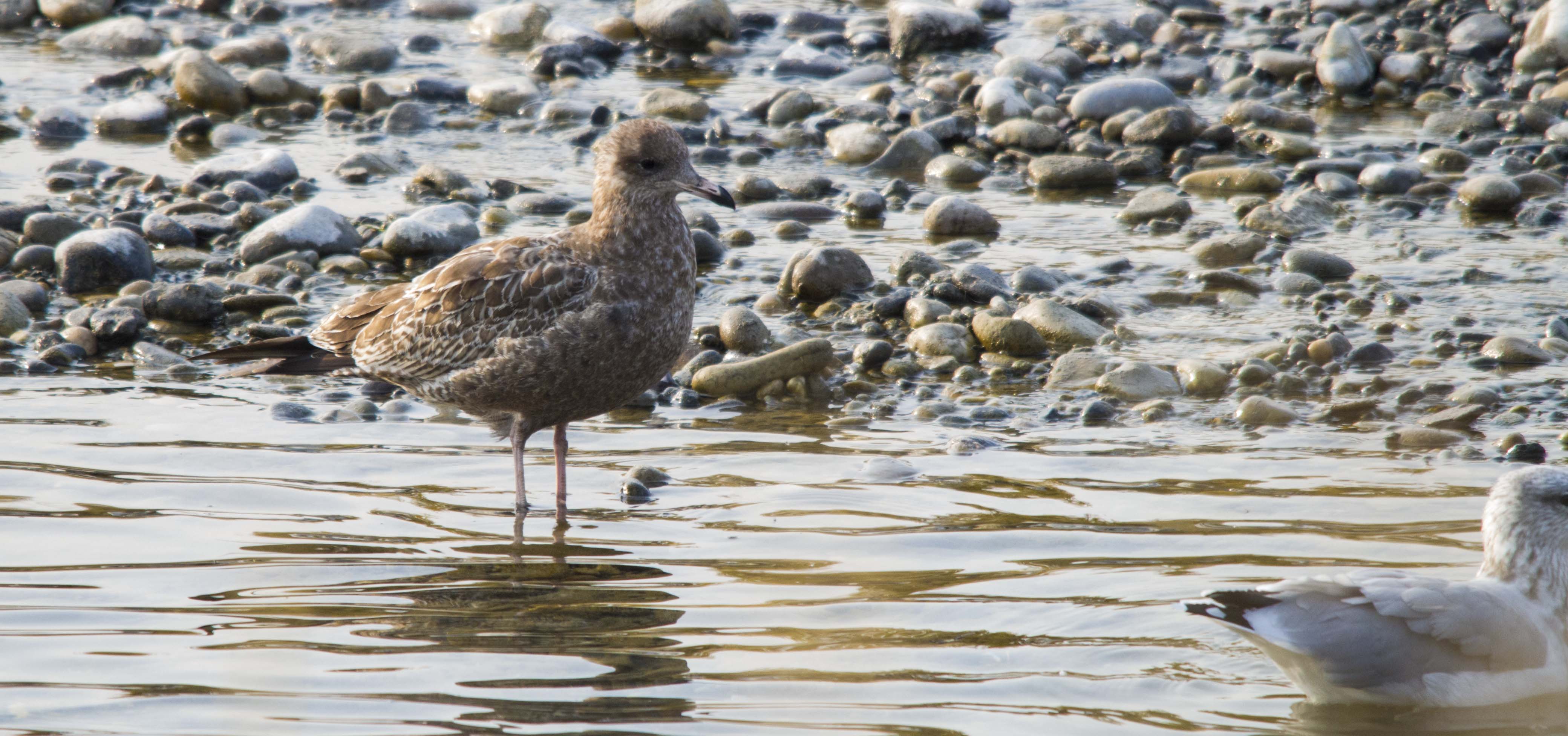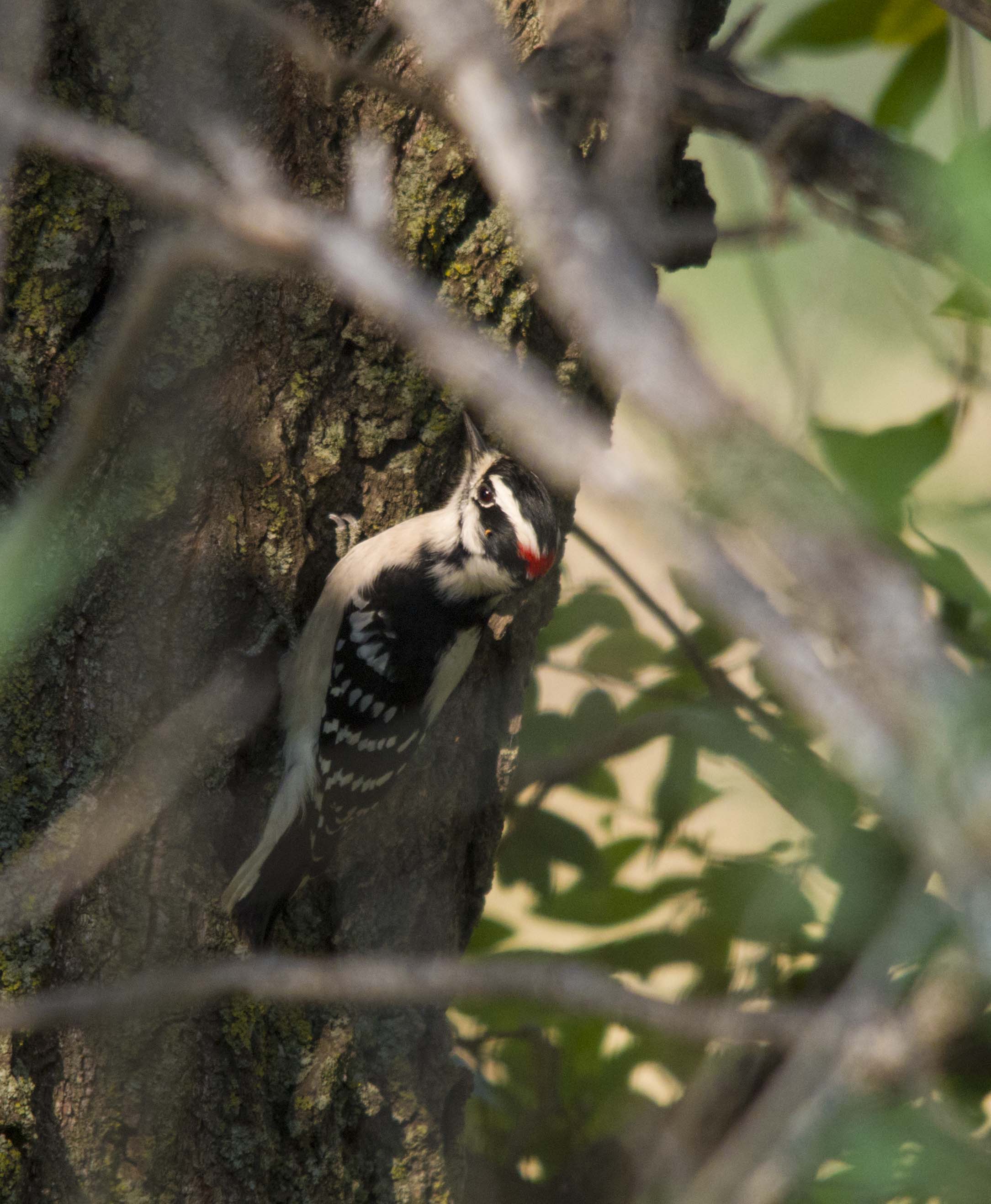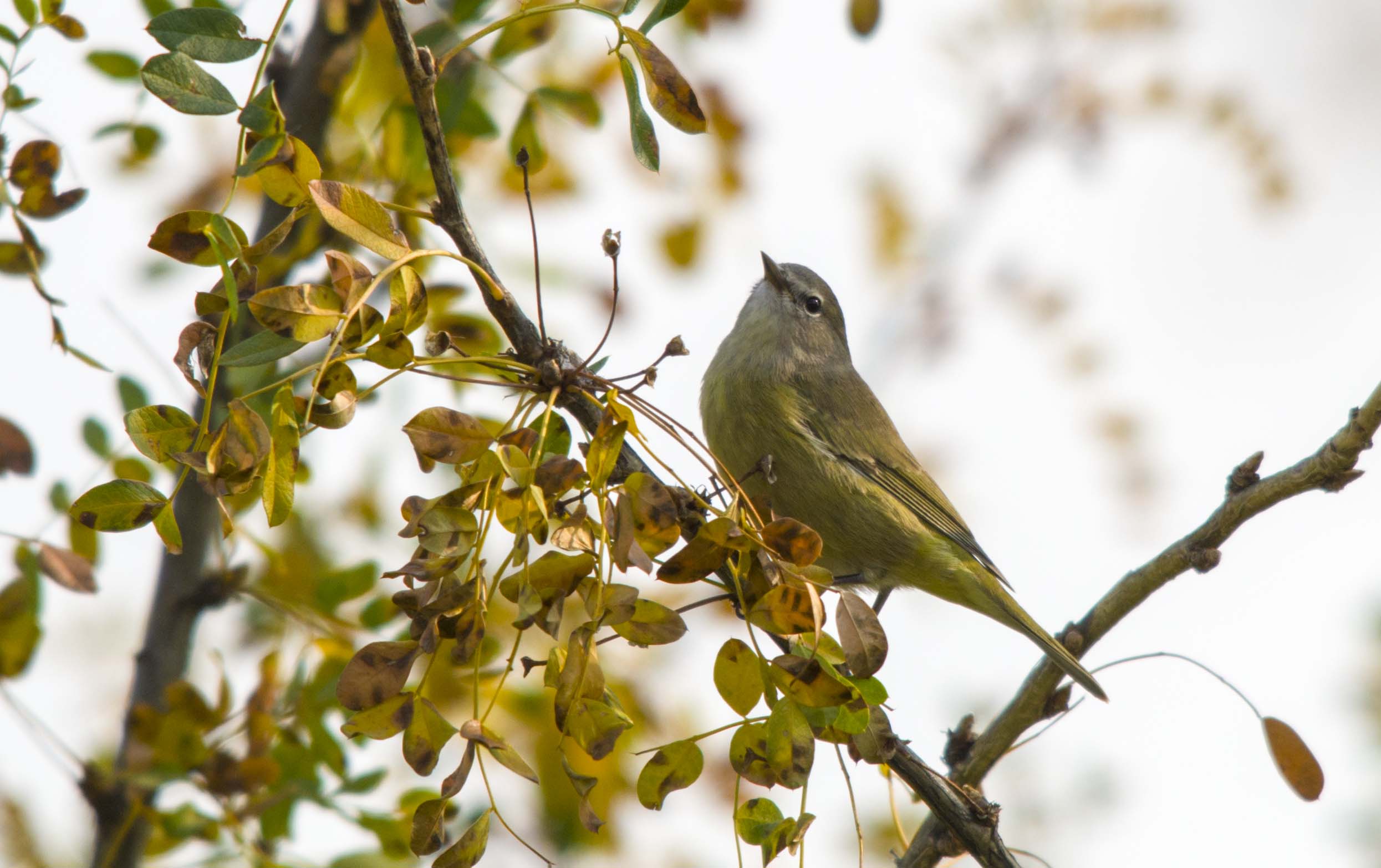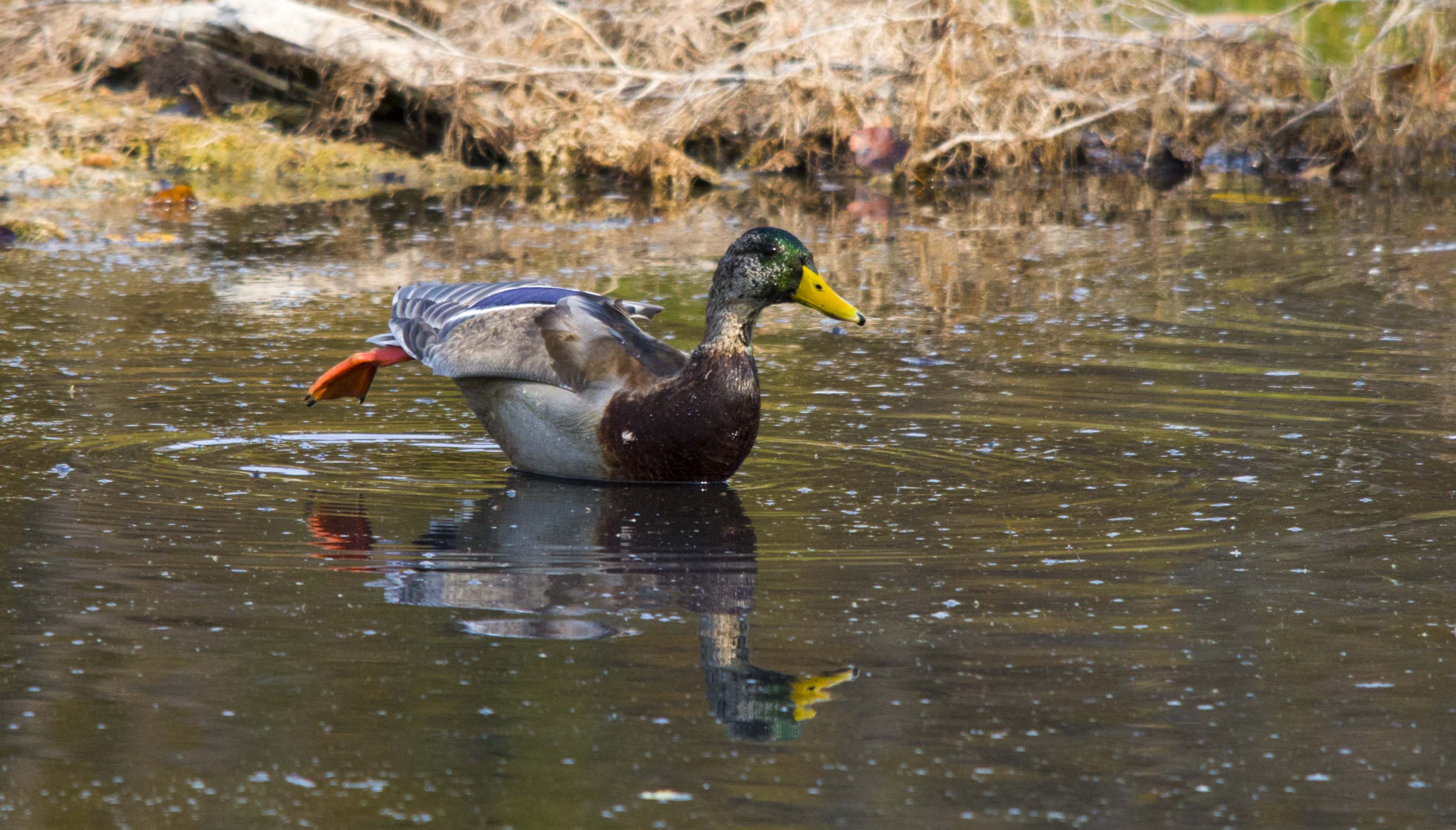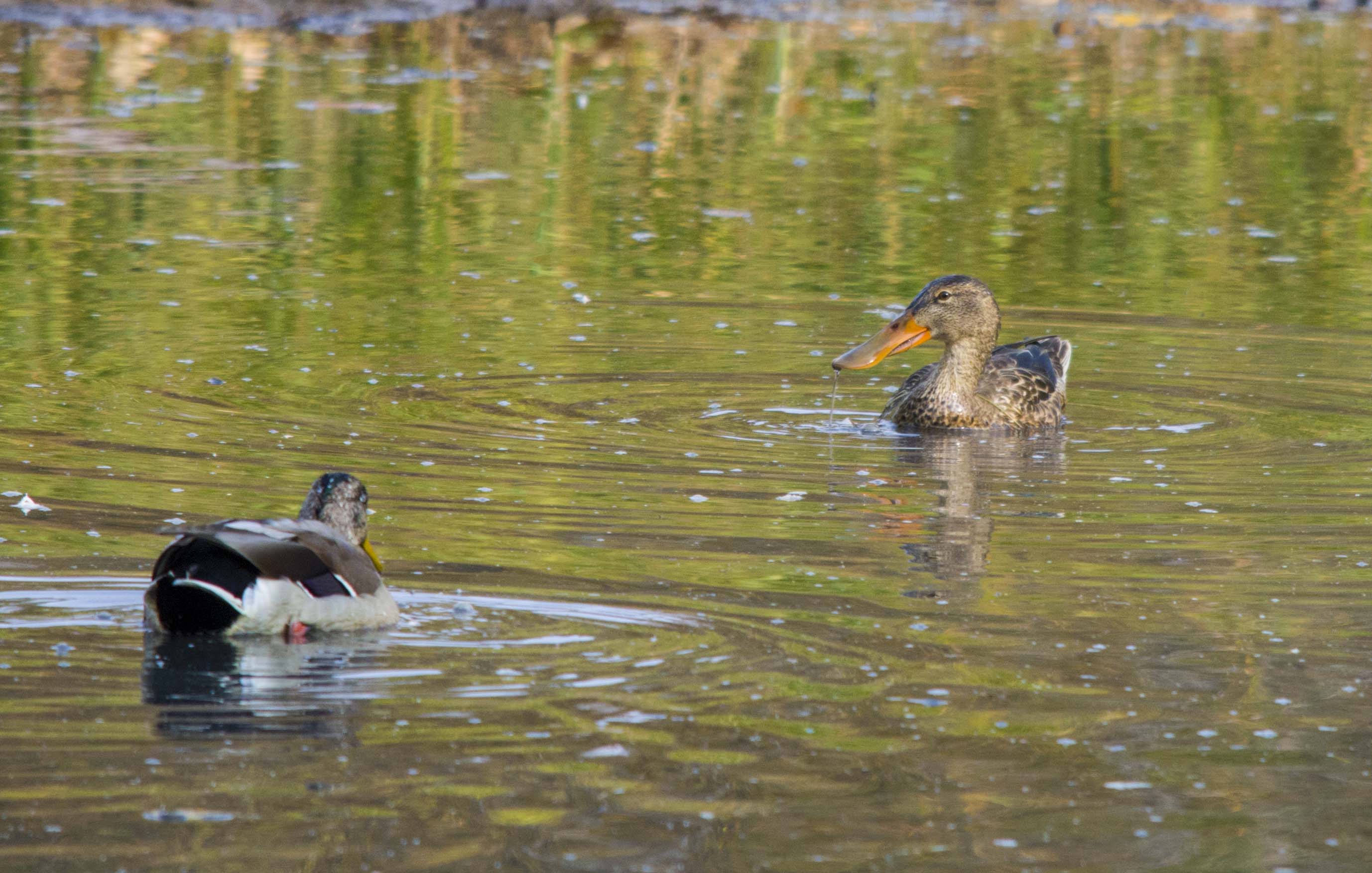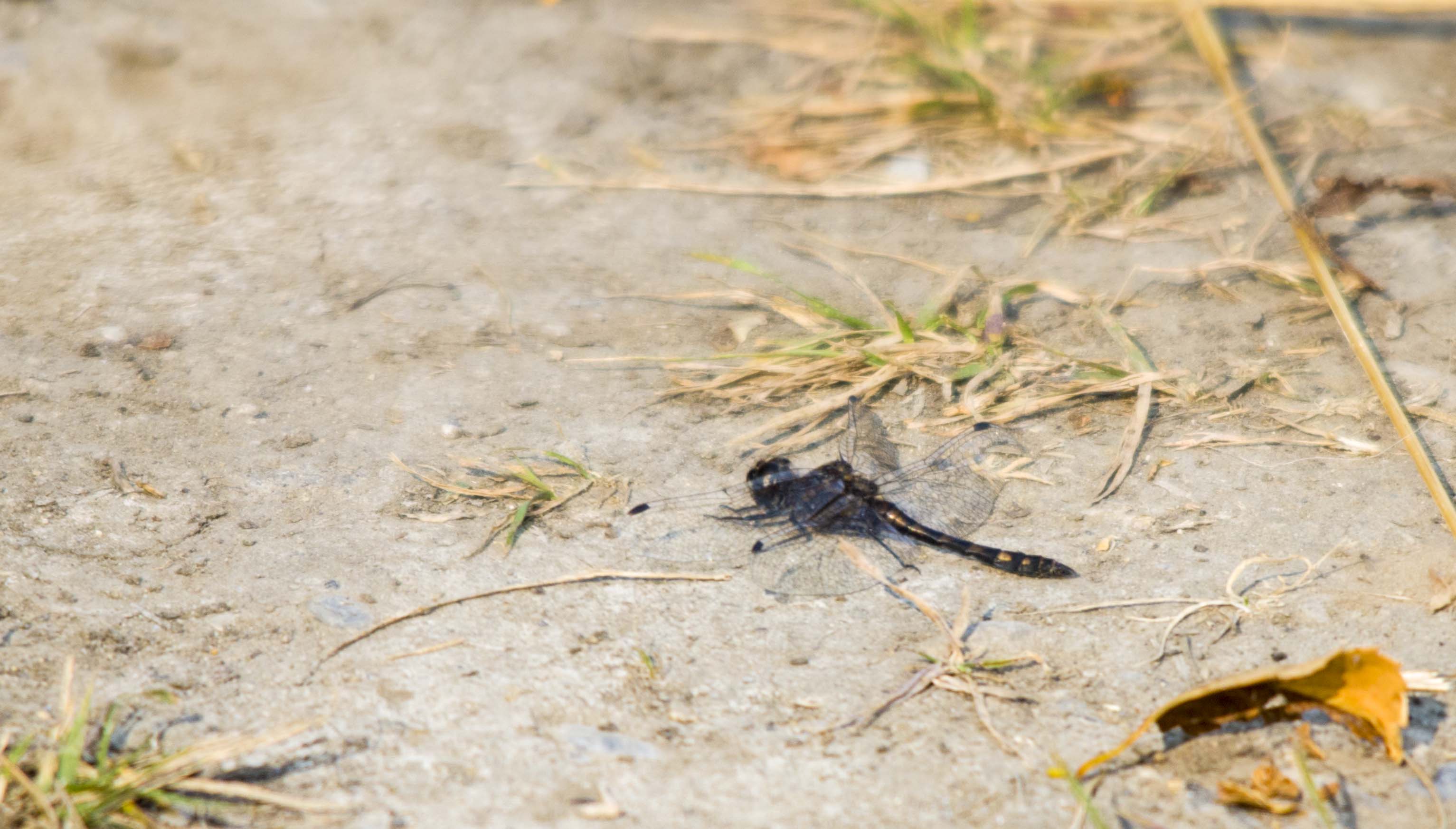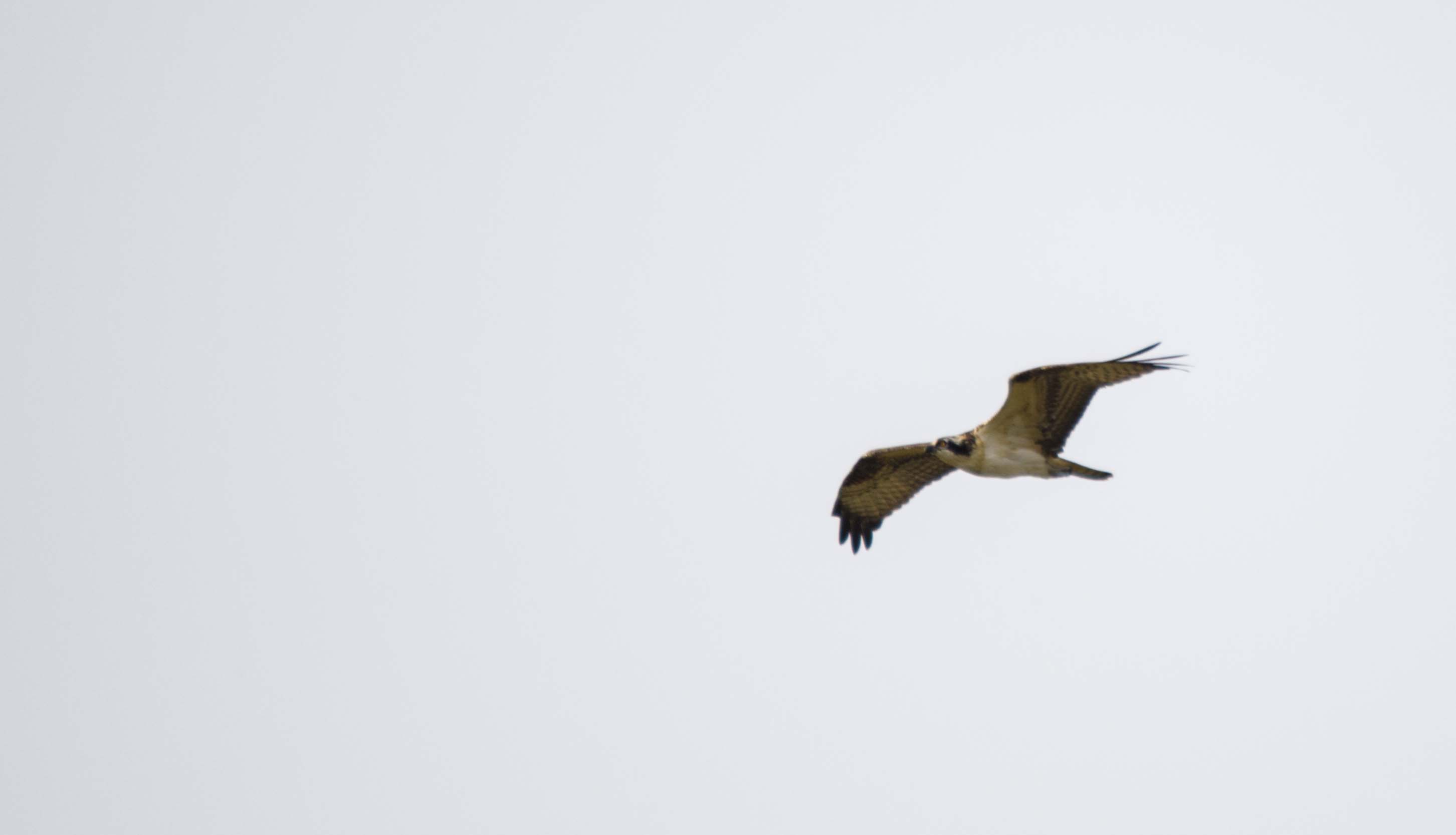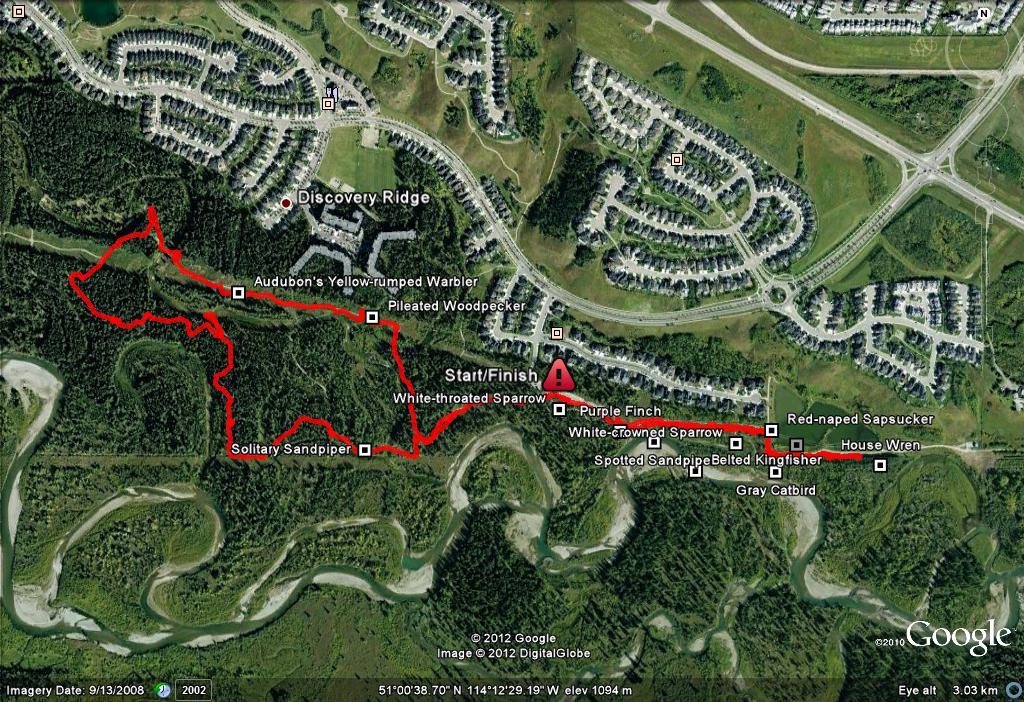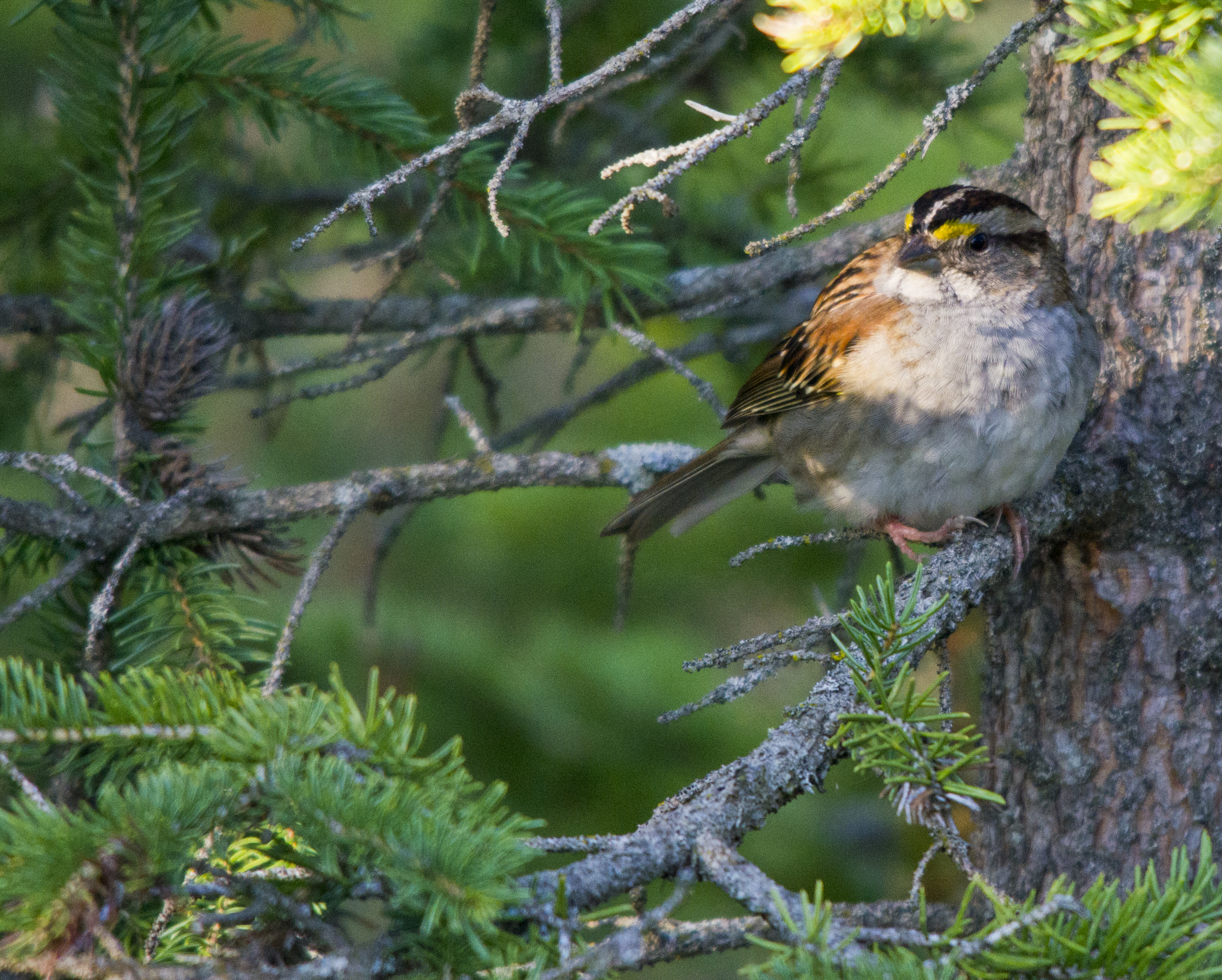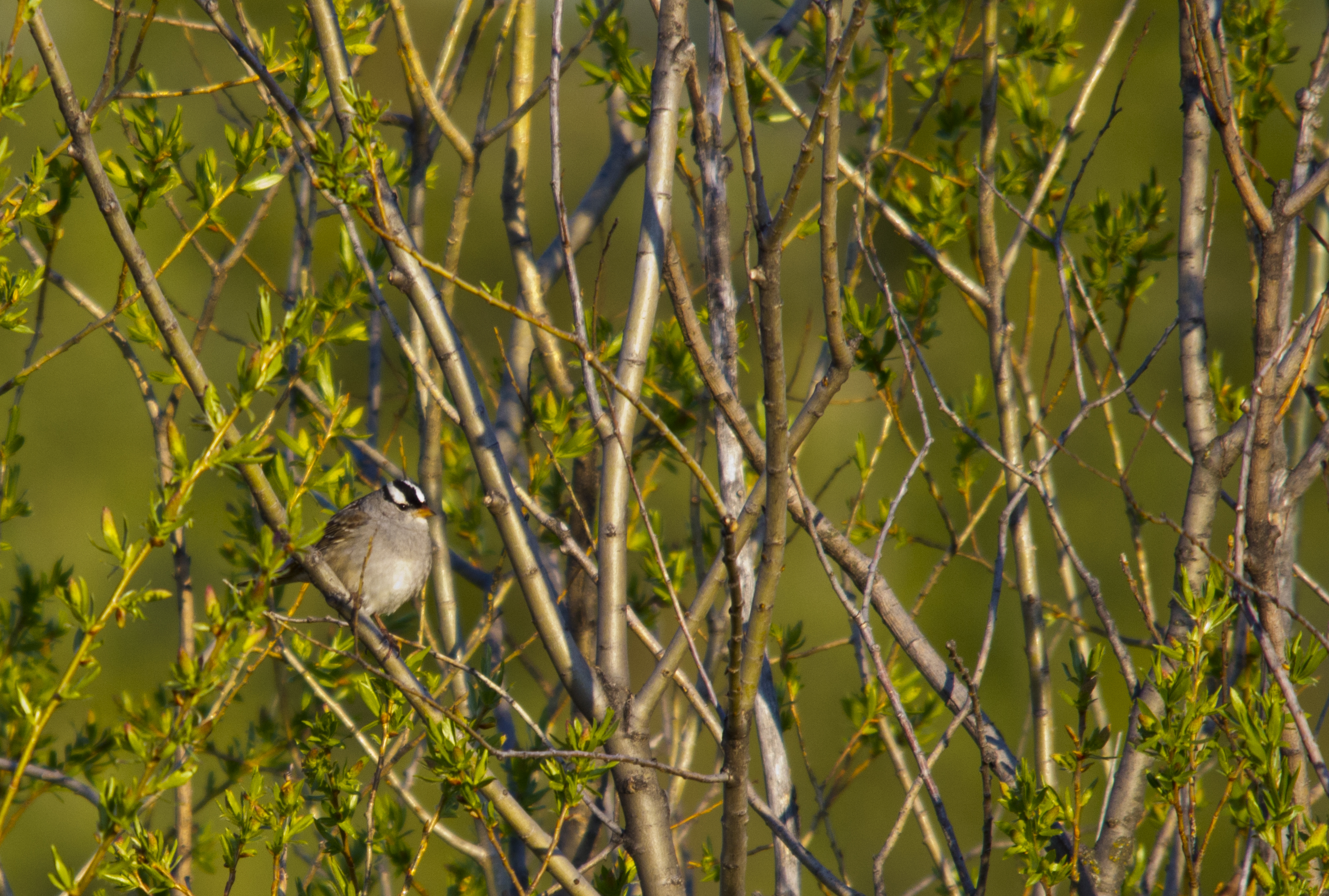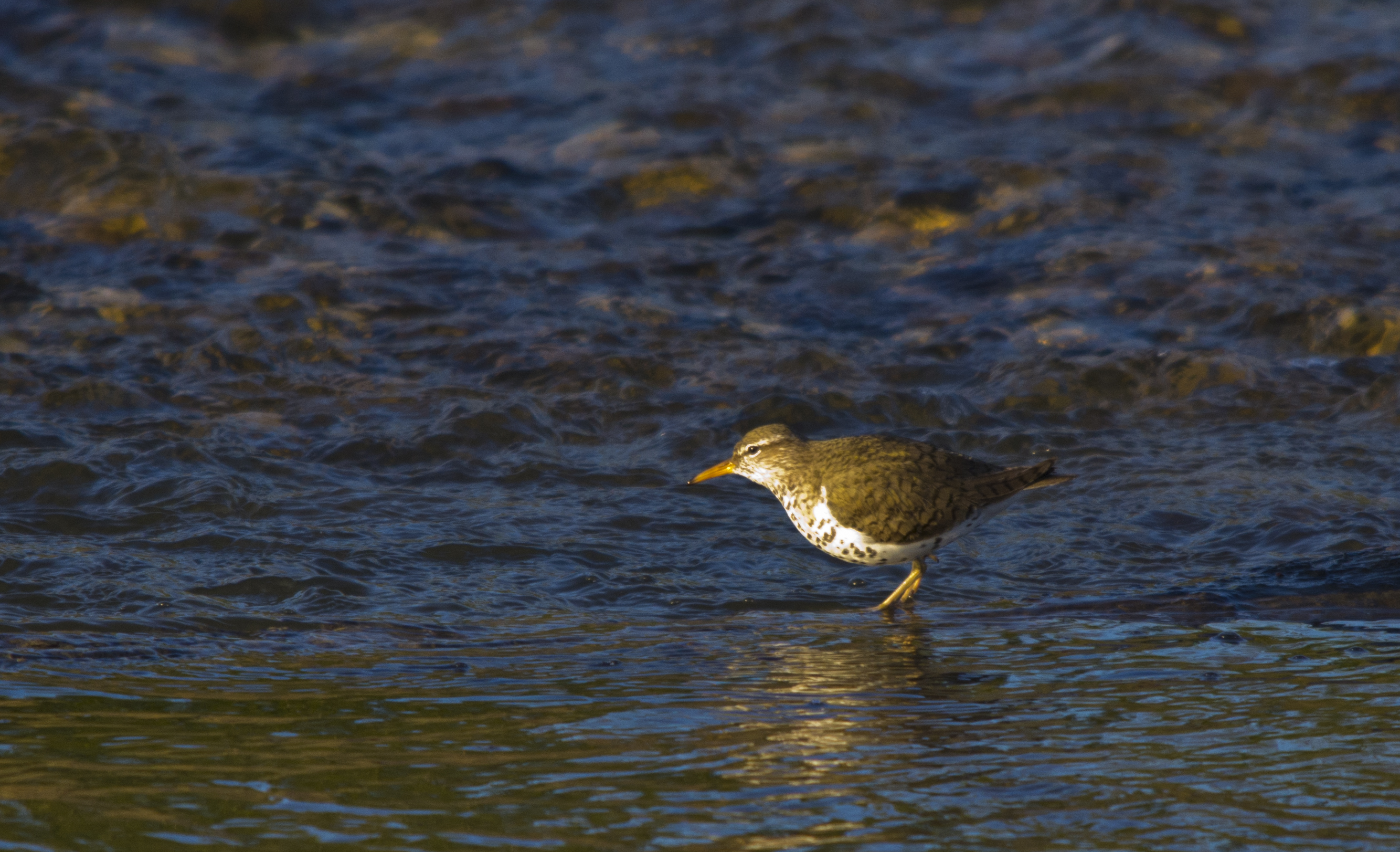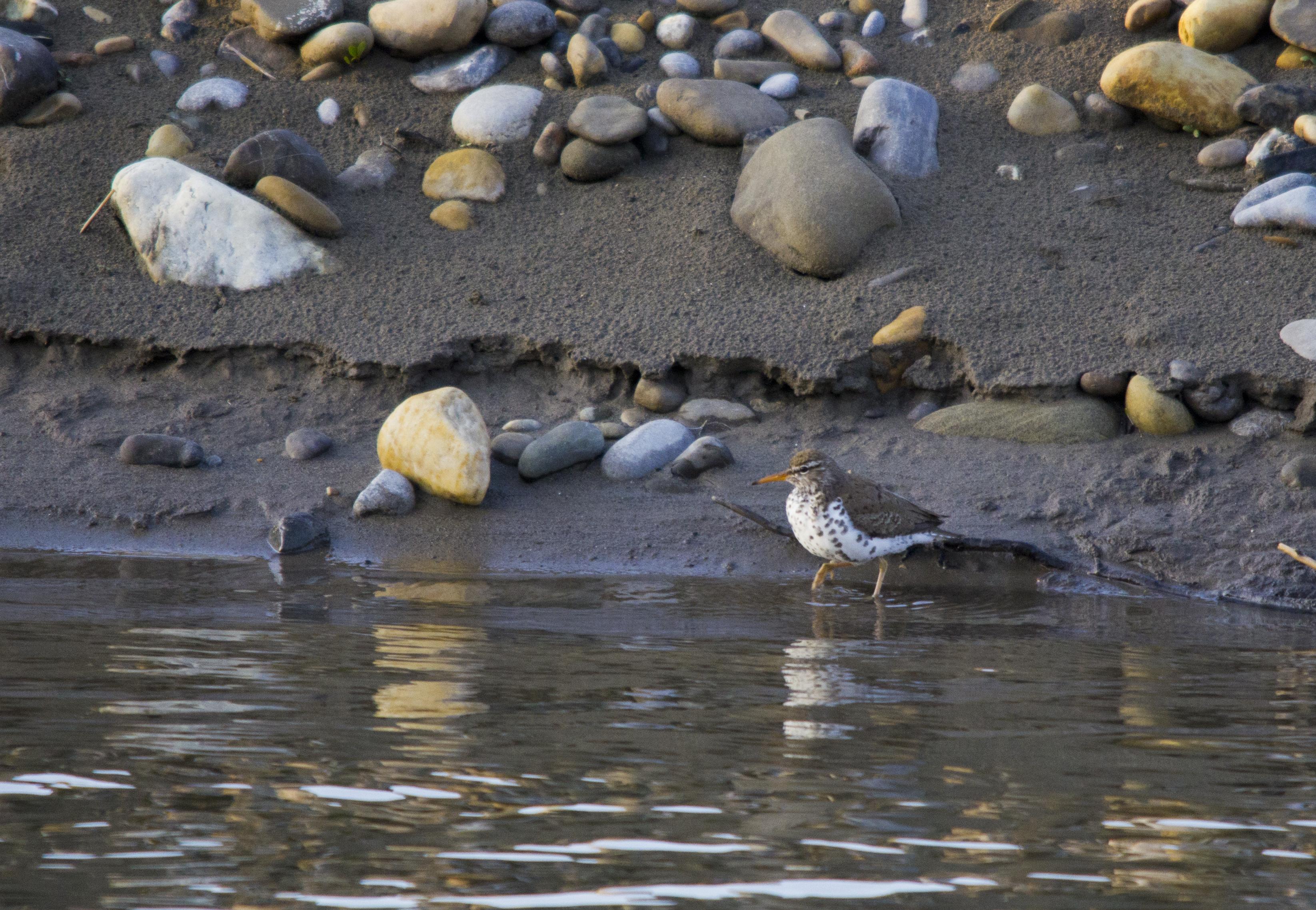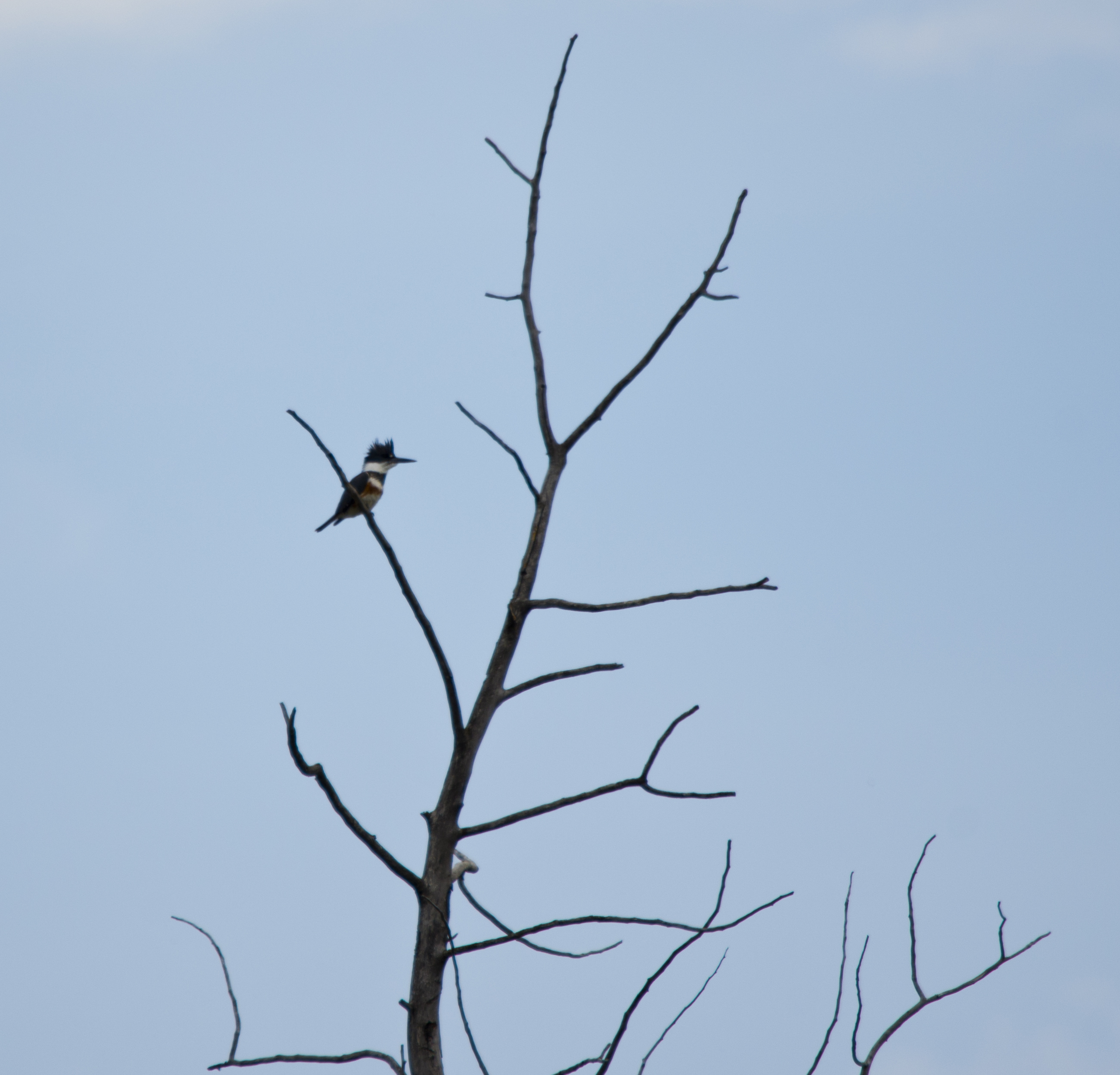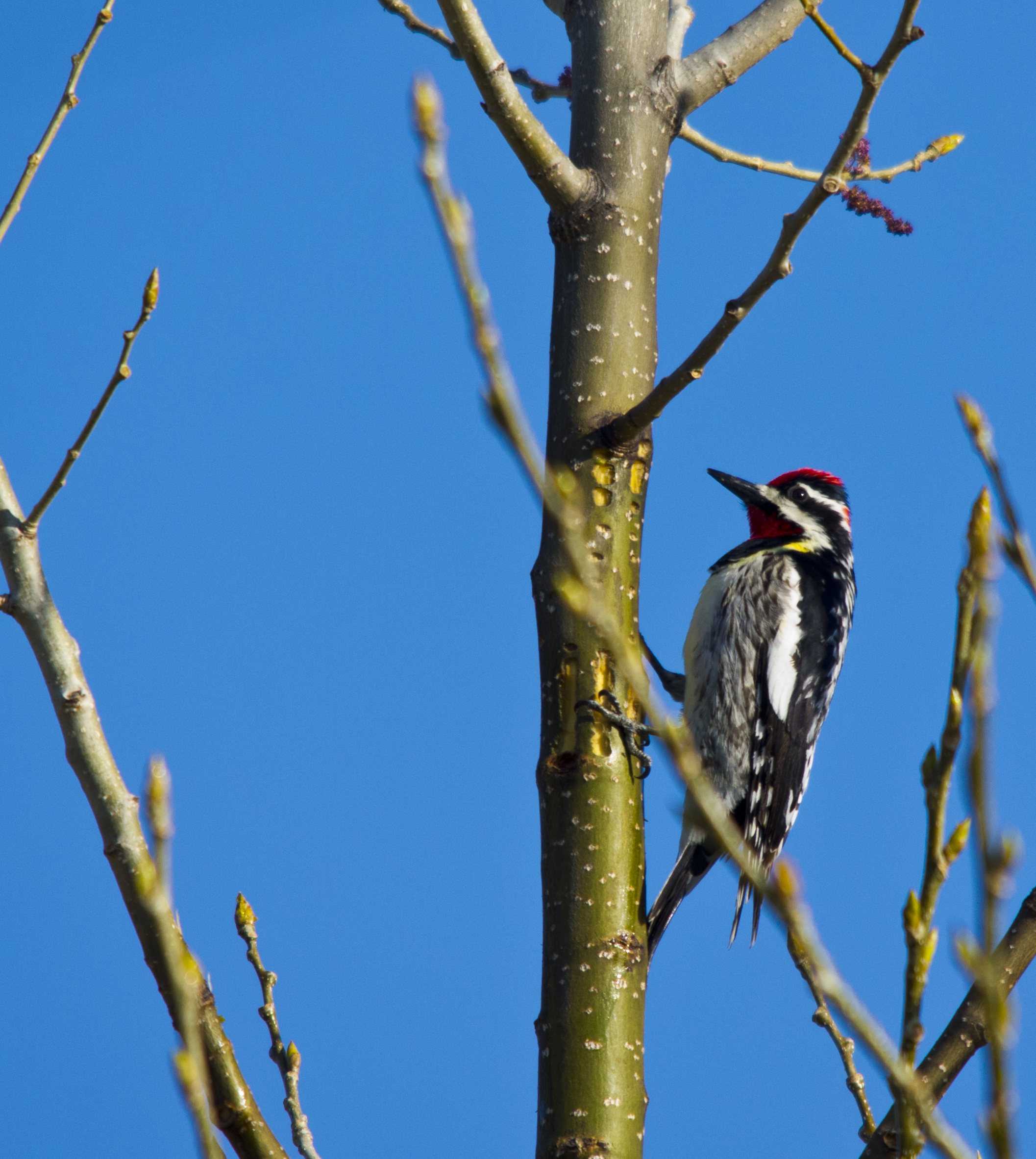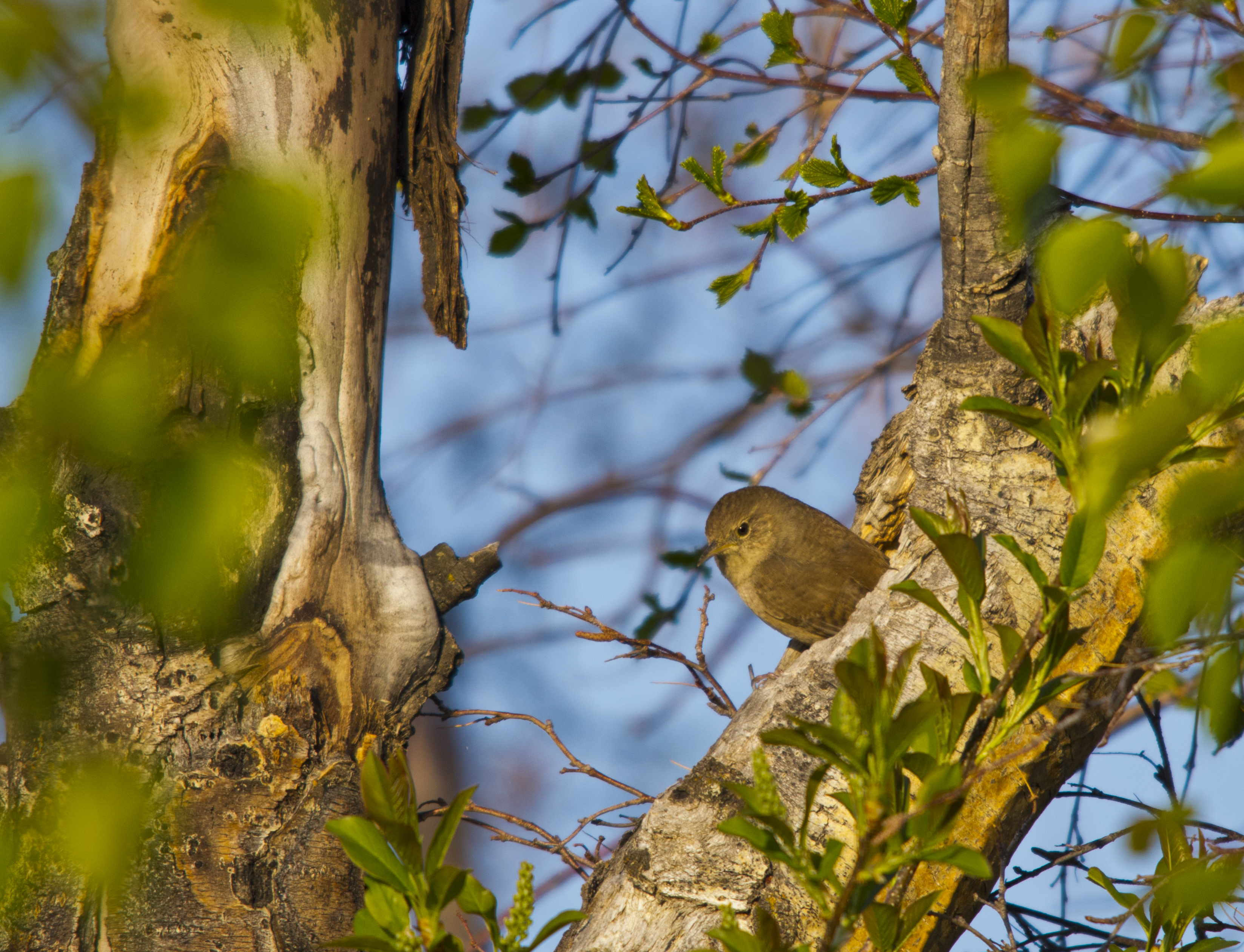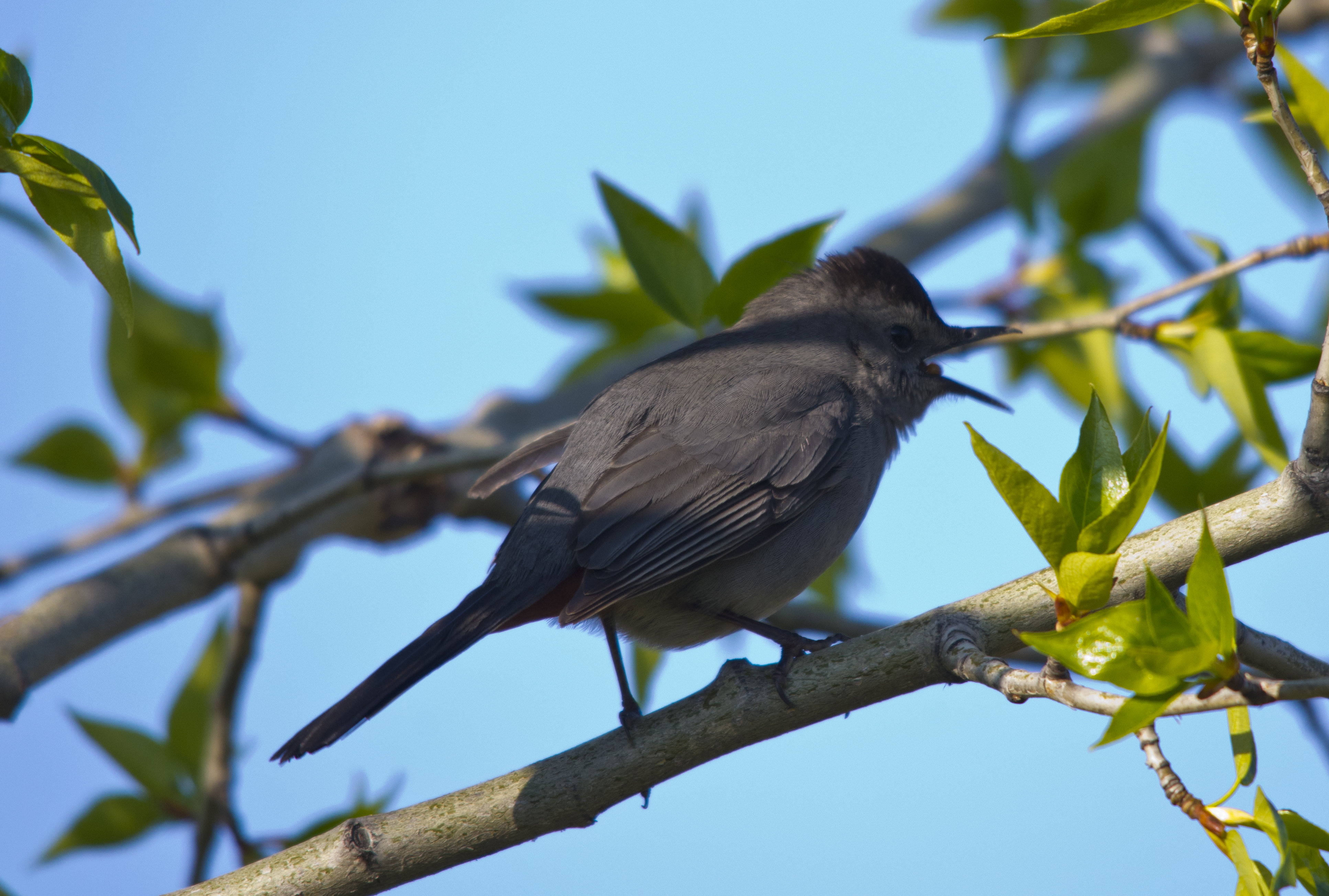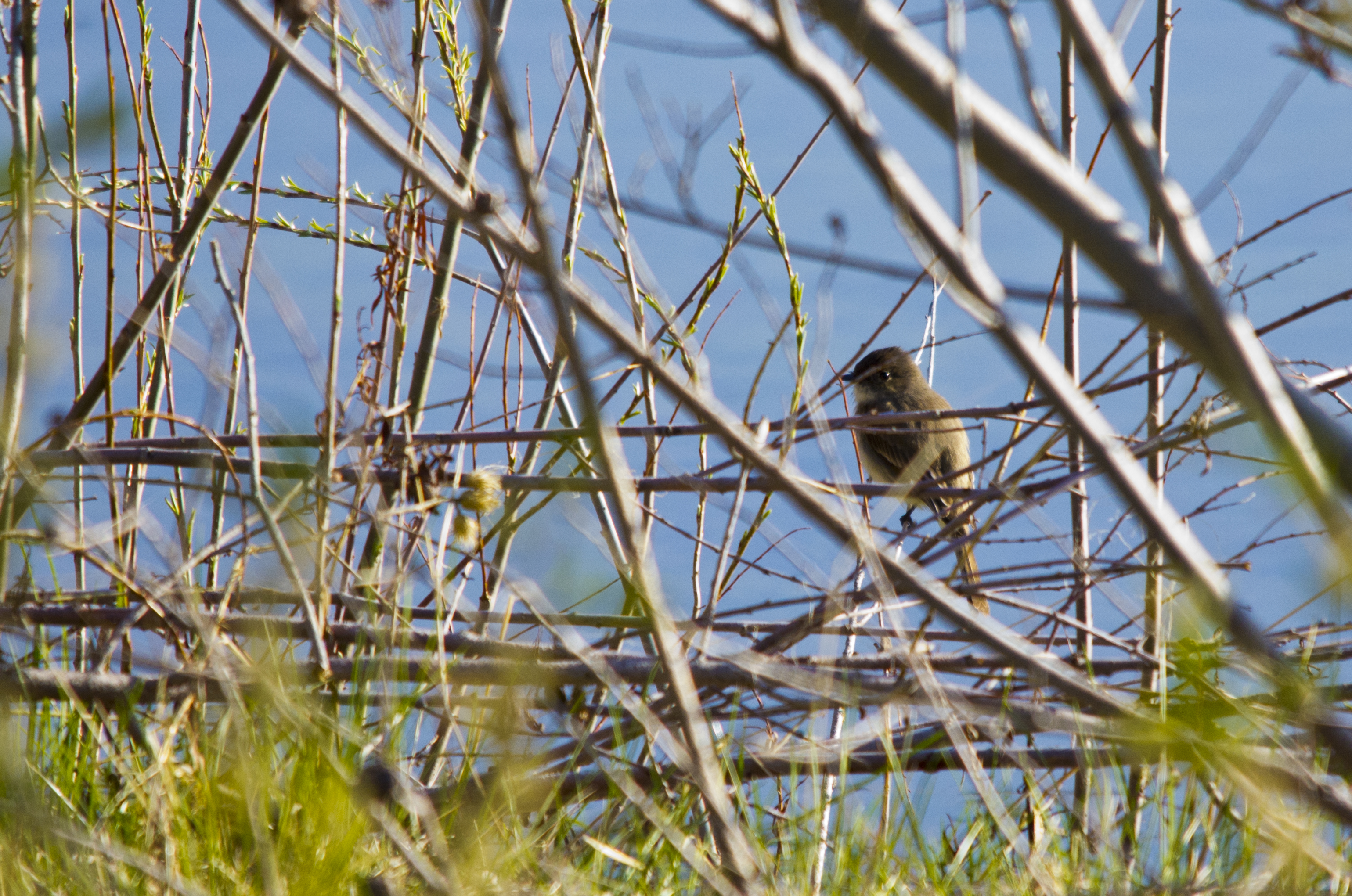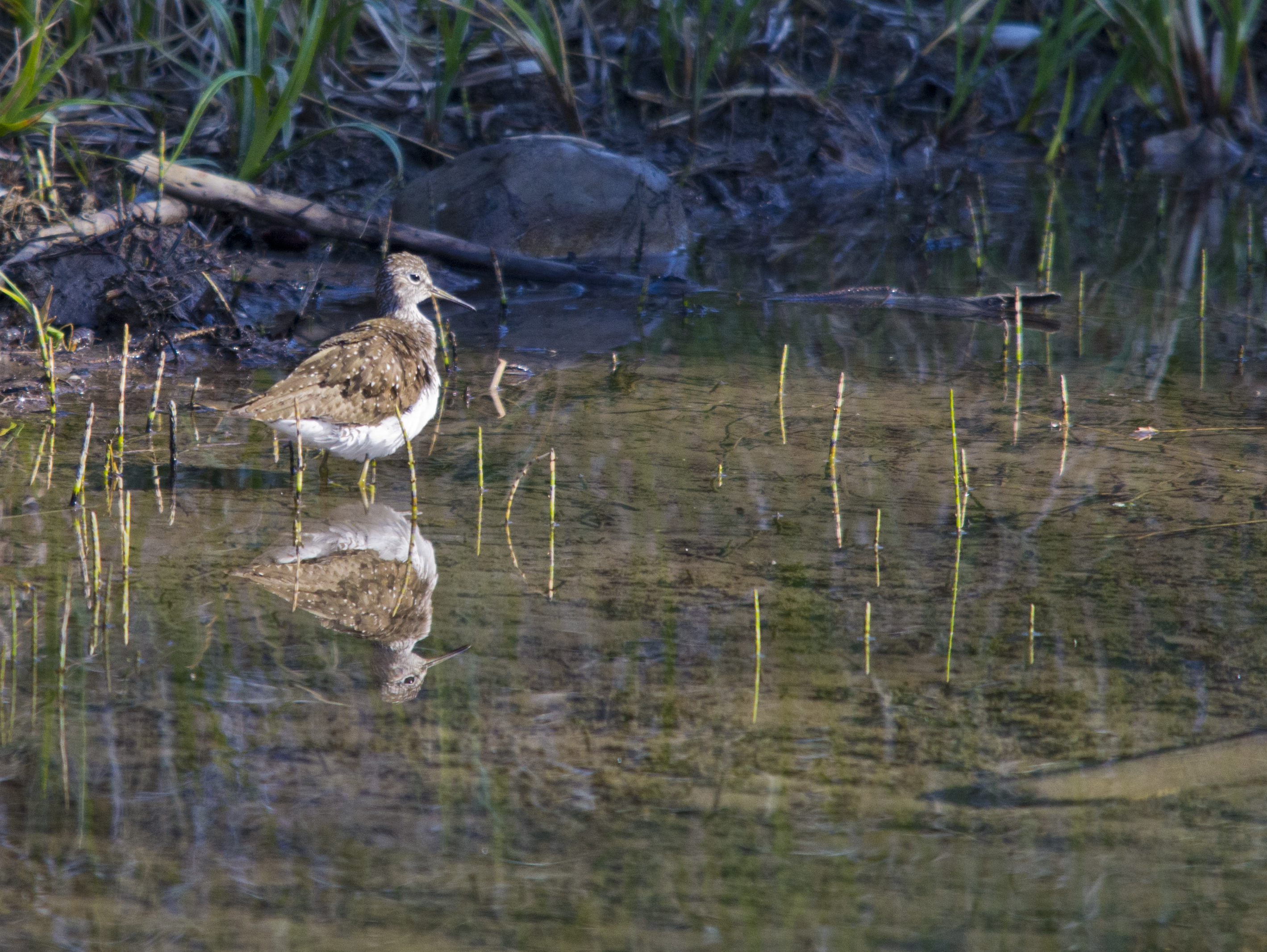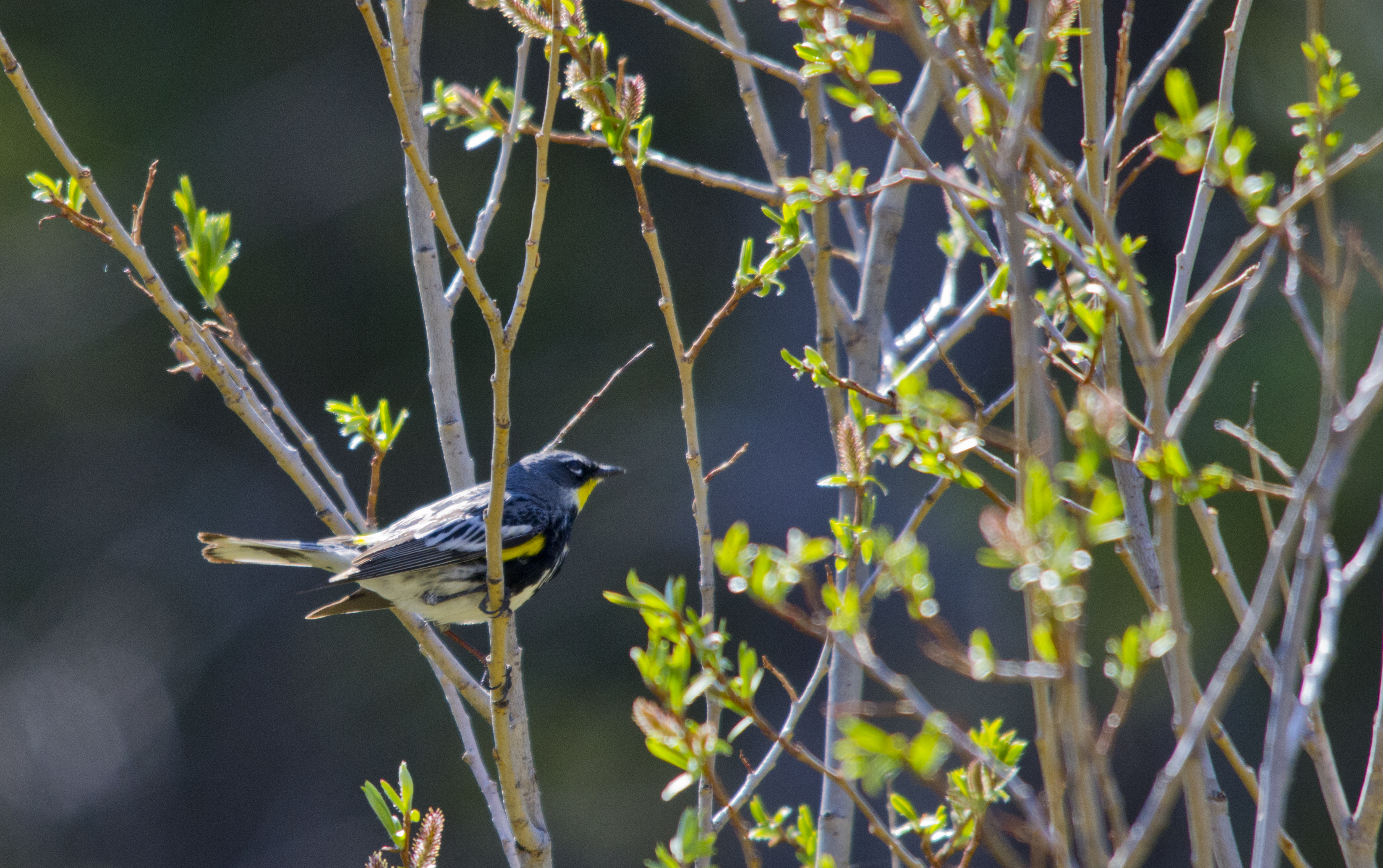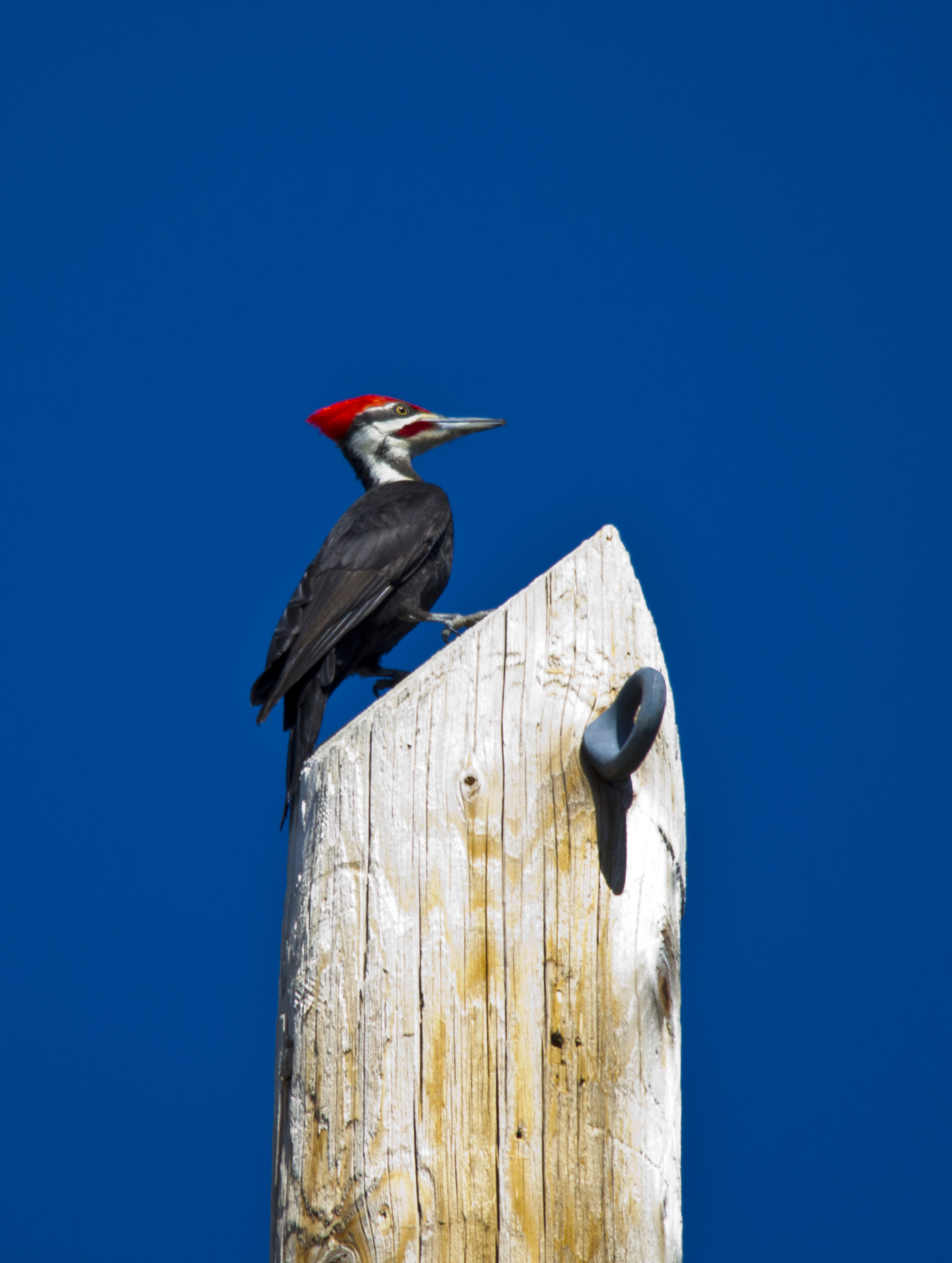Posted by Bob Lefebvre
In week two of the Friends of Fish Creek Provincial Park Society Autumn birding course we returned to the Inglewood Bird Sanctuary (IBS) for the first time since the flood of 2013. The sanctuary had been closed for over two years, but reopened in August. The trails along the river are still closed, but the area around the lagoons are accessible and remain a prime birding area in the city. Once again I filled in as leader for Dan Arndt, with the help of Rose Painter and George Best. George again provided the photos below, with one exception.
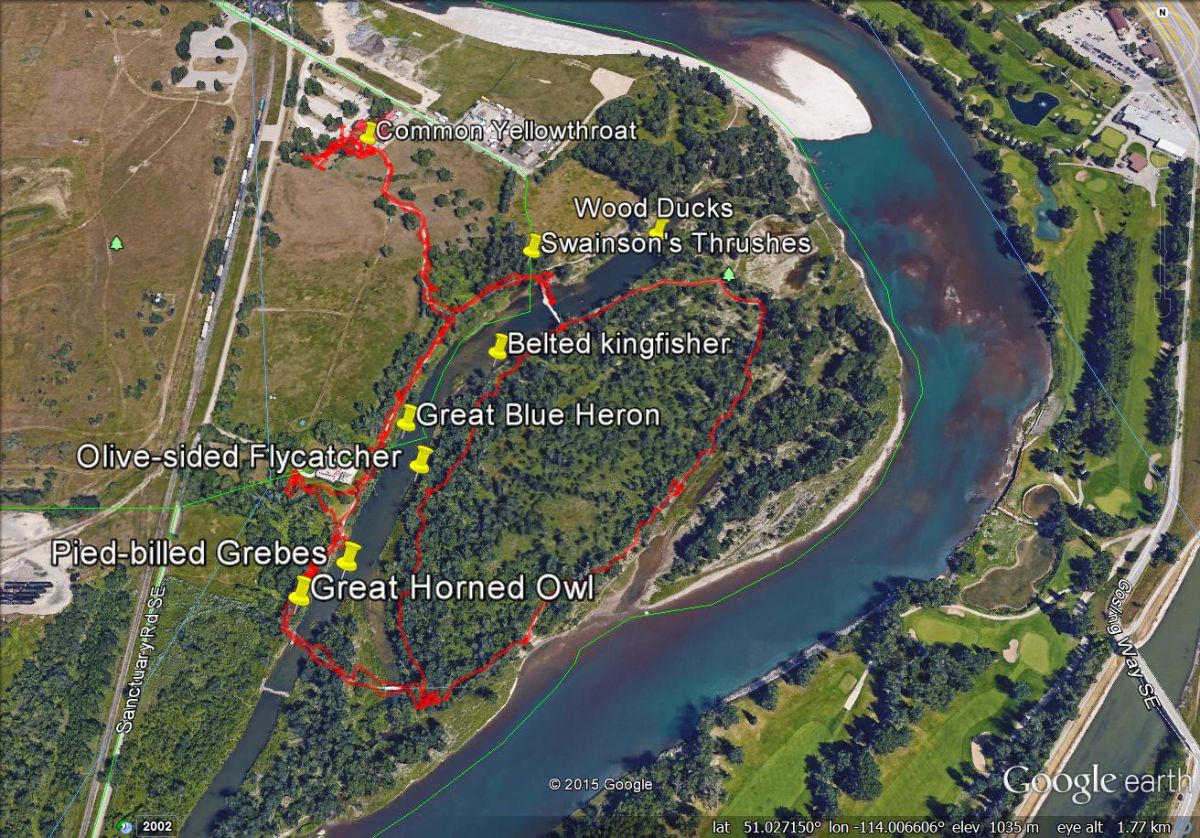
The Inglewood Bird Sanctuary, showing our route on September 13, 2015.
It is perhaps surprising that some of the best spots at IBS for migrating warblers and sparrows are the trees and bushes by the interpretive centre, right next to the parking lot. This area should not be overlooked during migration. When our Sunday morning group visited on September 13 we had one White-throated Sparrow, one Dark-eyed Junco, and a Tennessee, a Yellow-rumped, and an Orange-crowned Warbler before we entered the gate of the sanctuary.
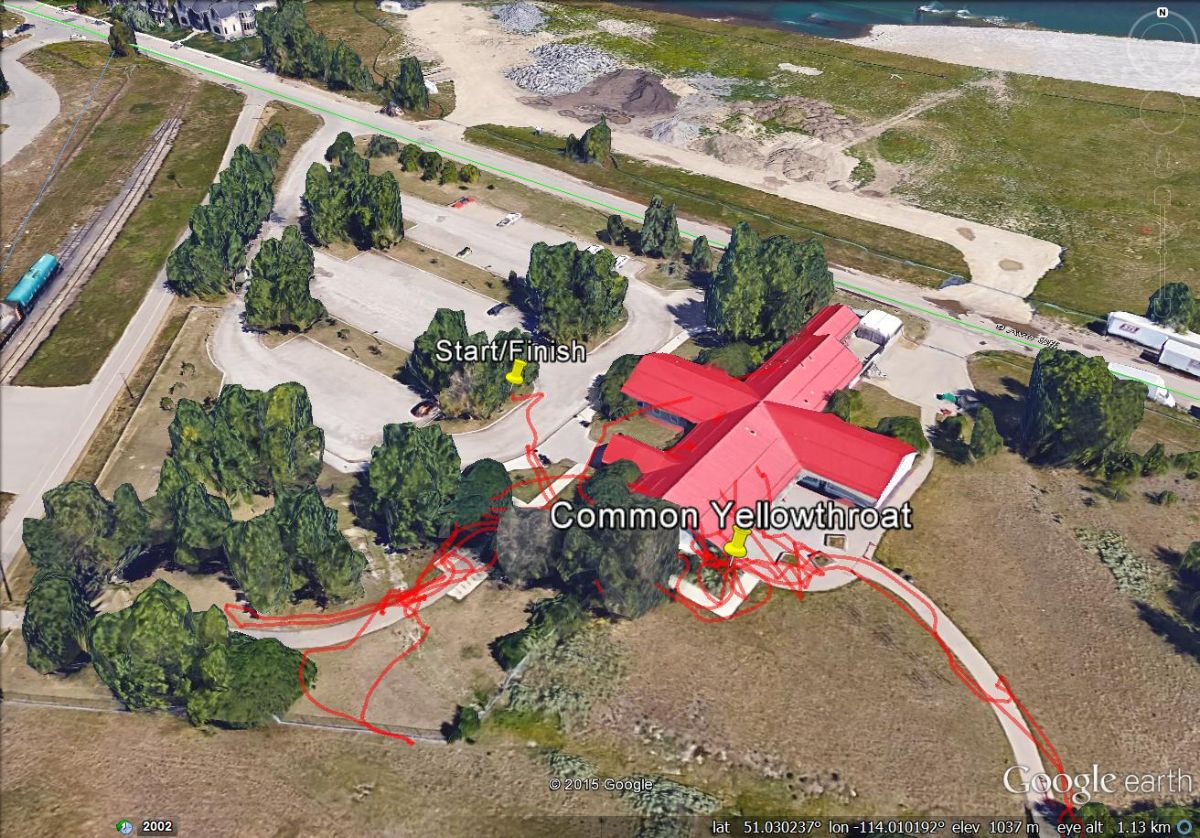
The parking lot and interpretive centre at IBS. We spent about 45 minutes in this area.
Immediately after we passed through the gate, a yellowish bird flew out of a low bush by the path, made a big circle, and collided with the glass door of the interpretive centre. I rushed over and picked it up, cupping it in both hands in an effort to keep it warm enough that it might revive (it was only 10 degrees Celsius out, and a stunned songbird could quickly die of hypothermia if not kept warm.) We tried to identify it while doing this. The bird had a large white patch on its head and a smaller one on its nape which confused us at first. But rather than an exotic warbler that we weren’t familiar with, it was a Common Yellowthroat with a touch of leucism (missing pigments in some feathers).

Common Yellowthroat with leucism, unable to fly after colliding with a window. Photo by Rose Painter.
[exif id=”14855″]
It took about fifteen minutes before the bird revived, and it finally flew weakly back to the same bush it originally flew out of. Three hours later, at the end of the walk, it was still there, moving about in the bushes, and easily identifiable by the white patches on its head.
When we finally entered the sanctuary proper, we circled the lagoon, where the majority of the other birds were sighted. Wood Ducks are one of the highlights here, as they are quite scarce anywhere else in the city. There are usually between 20 and 45 Wood Ducks on the lagoon from spring to late fall. All photos below by George Best.
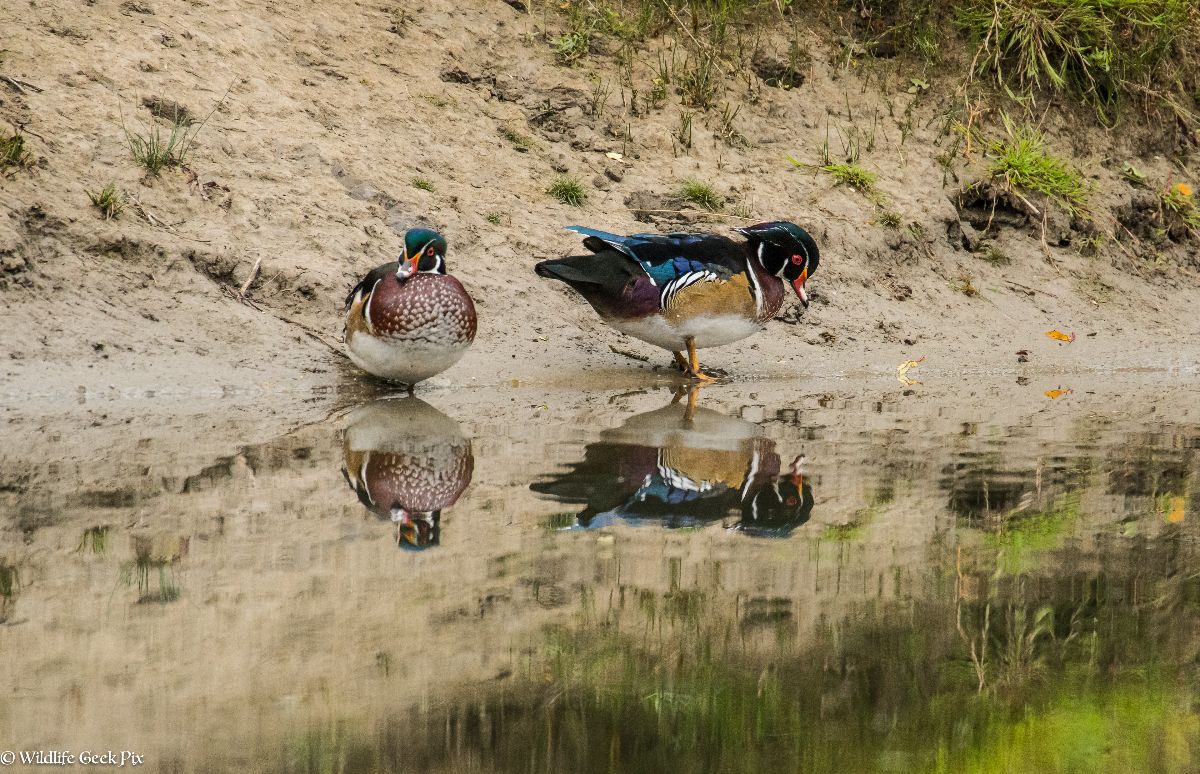
Male Wood Ducks, already back in breeding plumage after their late-summer molt.[exif id=”14854″]
A species we see rarely in the summer but quite often in the fall on quiet bodies of water is the Pied-billed Grebe. There were two on the lagoon throughout the week.
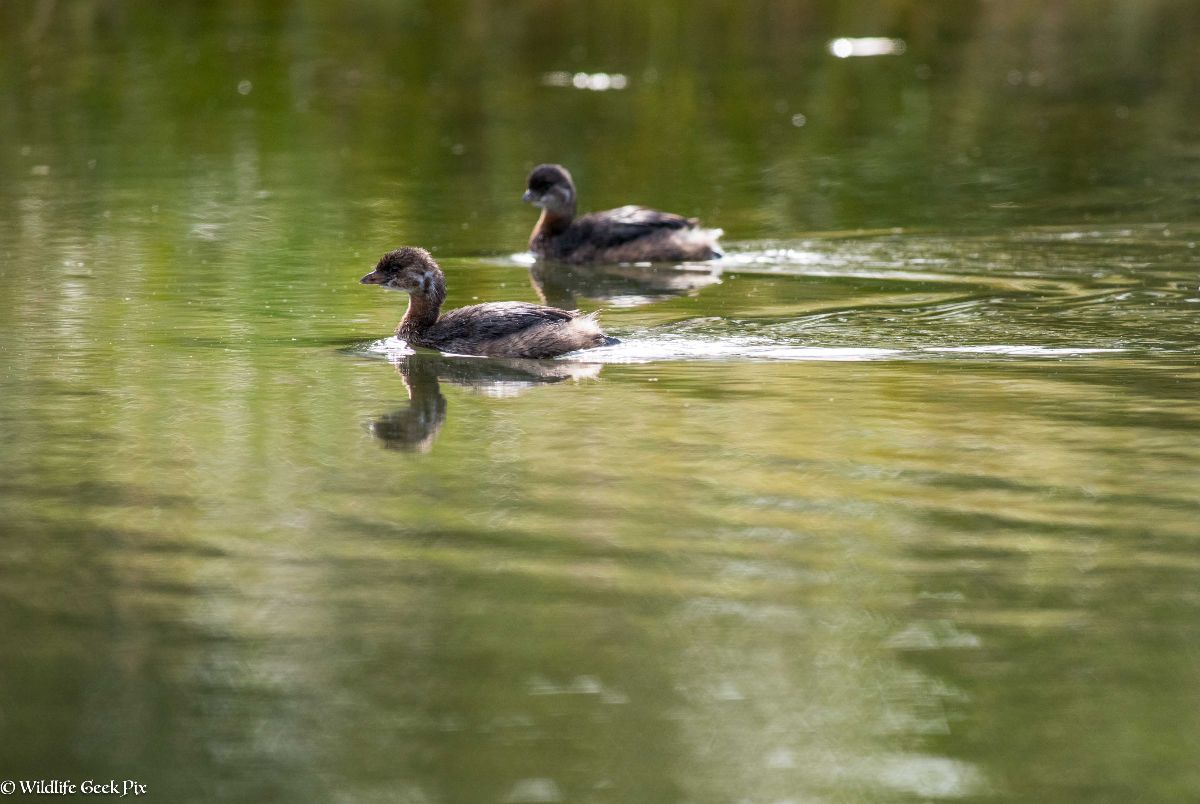
Pied-billed Grebes. [exif id=”14852″]
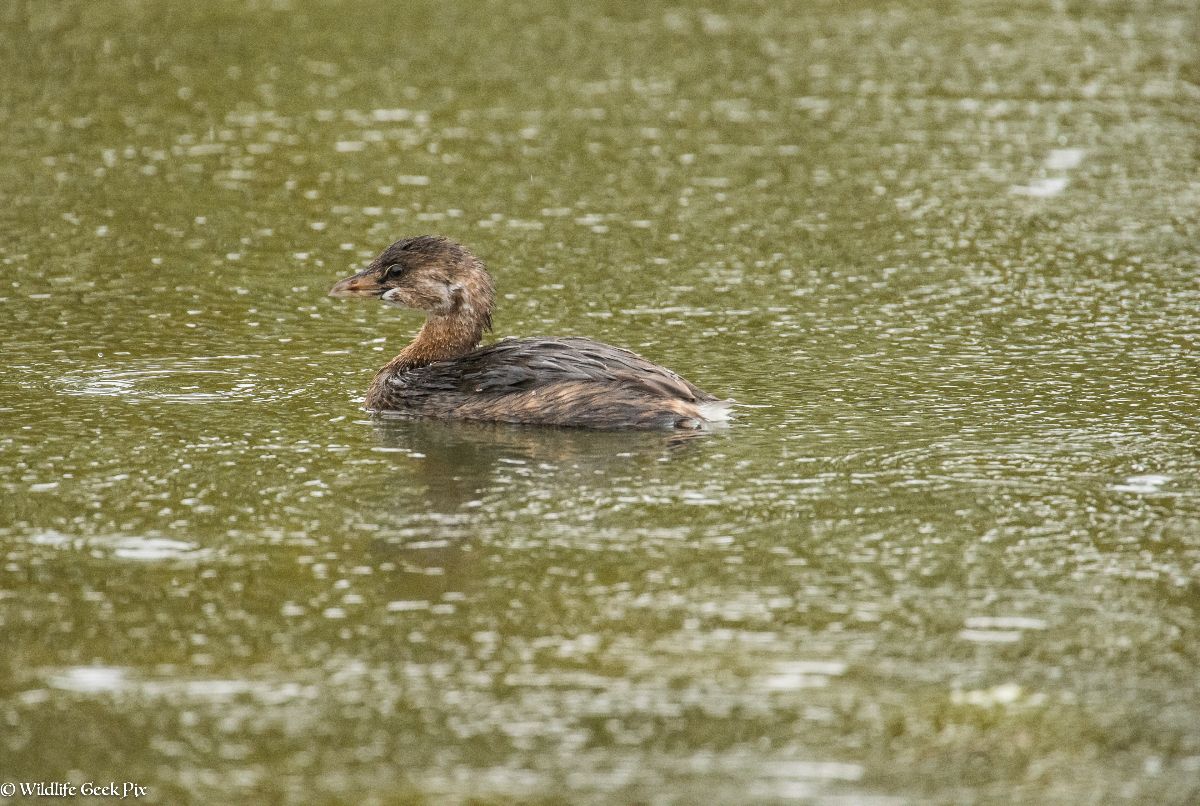
Pied-billed Grebe. [exif id=”14851″]
Great Blue Herons are another star attraction at IBS. They are often perched high up in the poplars, where they can be surprisingly difficult to find for such a large bird. We saw three Herons: Two perched, and one in flight.
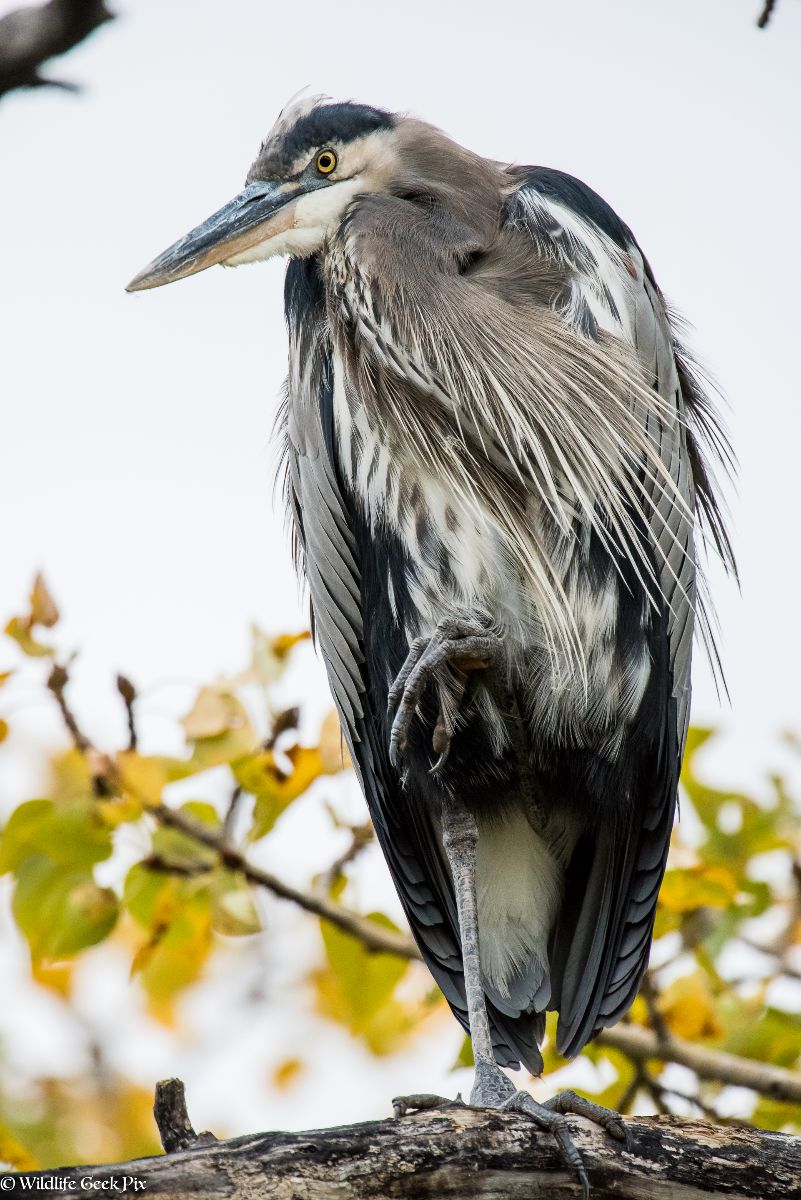
Great Blue Heron. [exif id=”14848″]
Belted Kingfishers are often rattling around the lagoon. We finally saw this female perched over the water after hearing it move around for quite a while. One or two of these birds usually stay here until very late in the fall, and they sometimes overwinter in the city.
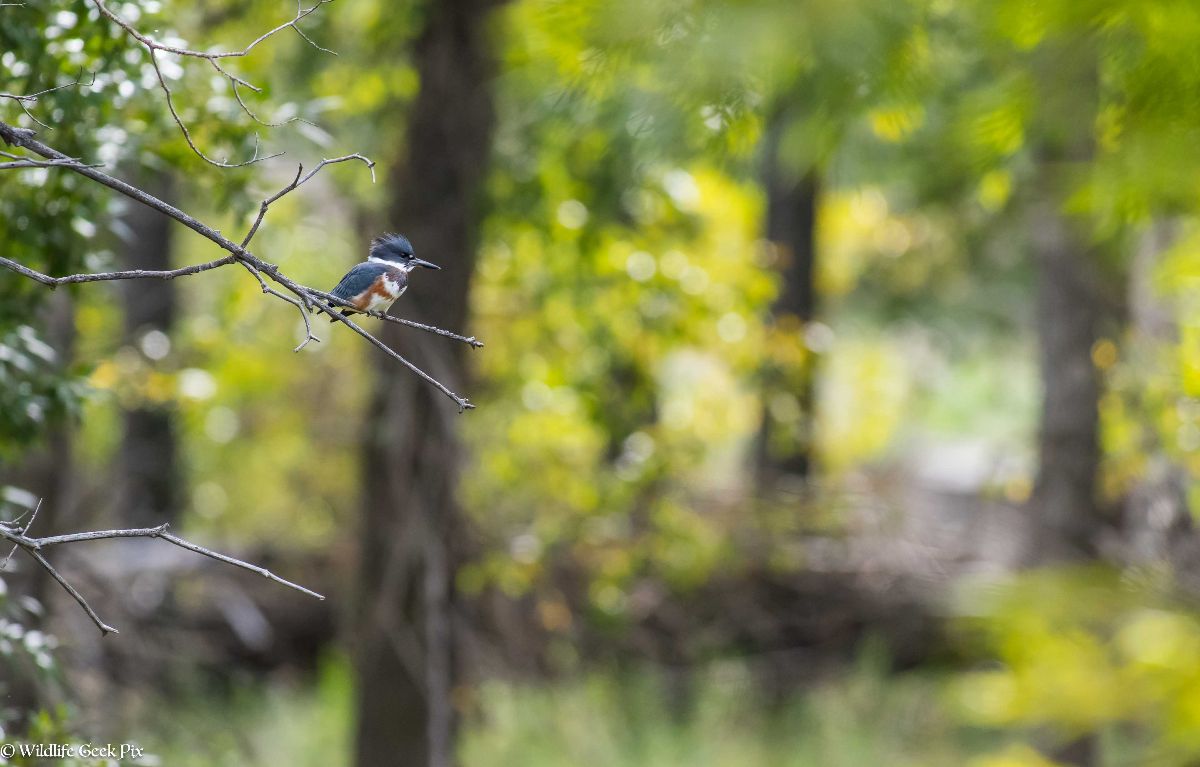
female Belted Kingfisher. [exif id=”14847″]
Down near the south end of the lagoon near the porcupine den we spotted this Great Horned Owl. They are generally always around the sanctuary somewhere, but can be really hard to find. The two adults that breed here were not yet at their winter daytime roost in the spruce trees by the Walker House. Perhaps this is one of them.

Great Horned Owl. [exif id=”14849″]
We tallied 36 species for the day, including a Cooper’s Hawk, a Bald Eagle, A Red-tailed-Hawk, two Swainson’s Hawks, a Merlin, and a Golden-crowned Kinglet. Many other species were seen by FFCPP groups earlier in the week. George attends on Mondays as well, and he took some more photos that day (September 7), as shown below.
Flycatching from a tall bare branch, which they typically do, was this Olive-sided Flycatcher. There were two by the lagoon. This species is only seen in the city on migration, though it breeds nearby in the foothills.
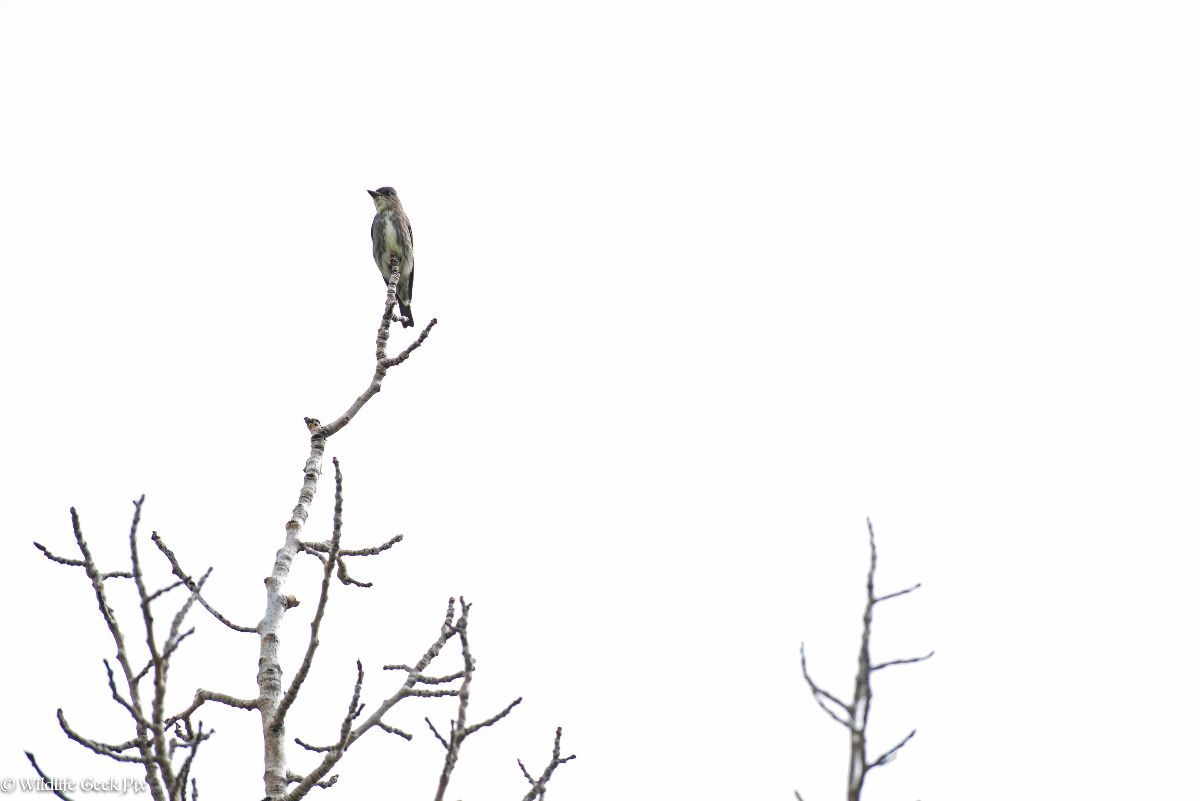
Olive-sided Flycatcher. [exif id=”14850″]
Swainson’s Thrushes were moving through on migration, and the group saw an incredible fifty-one that day! Below is a pair of these shy birds.
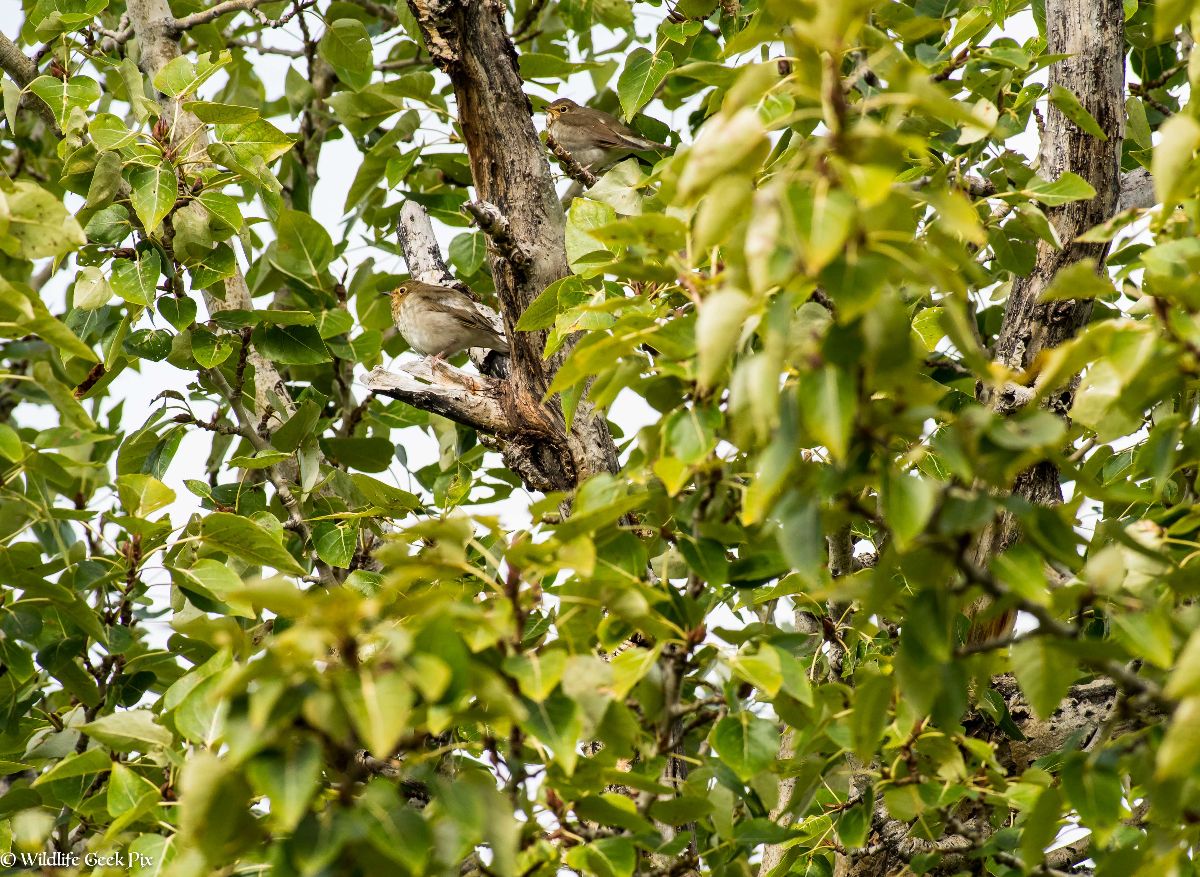
A pair of Swainson’s Thrushes. [exif id=”14853″]
Finally, a couple of shots of a beautiful migrating male American Redstart.
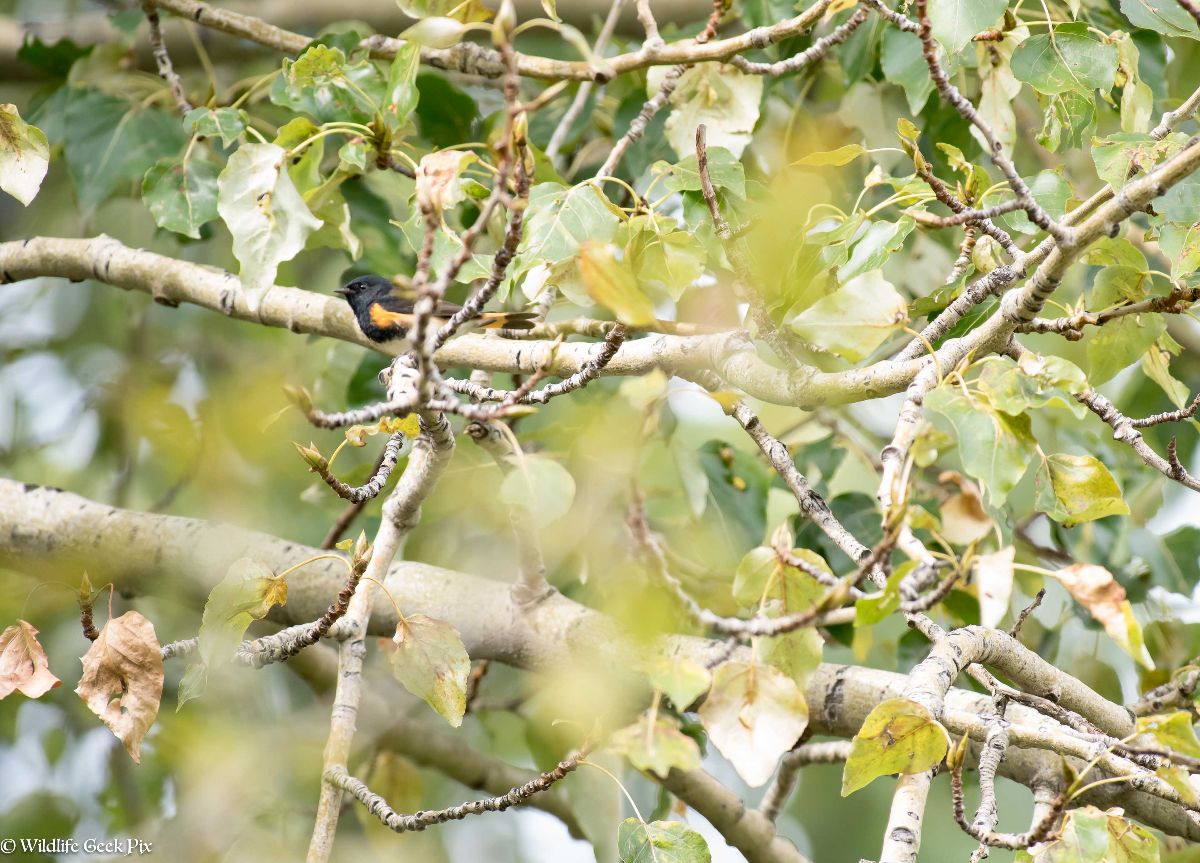
male American Redstart. [exif id=”14846″]
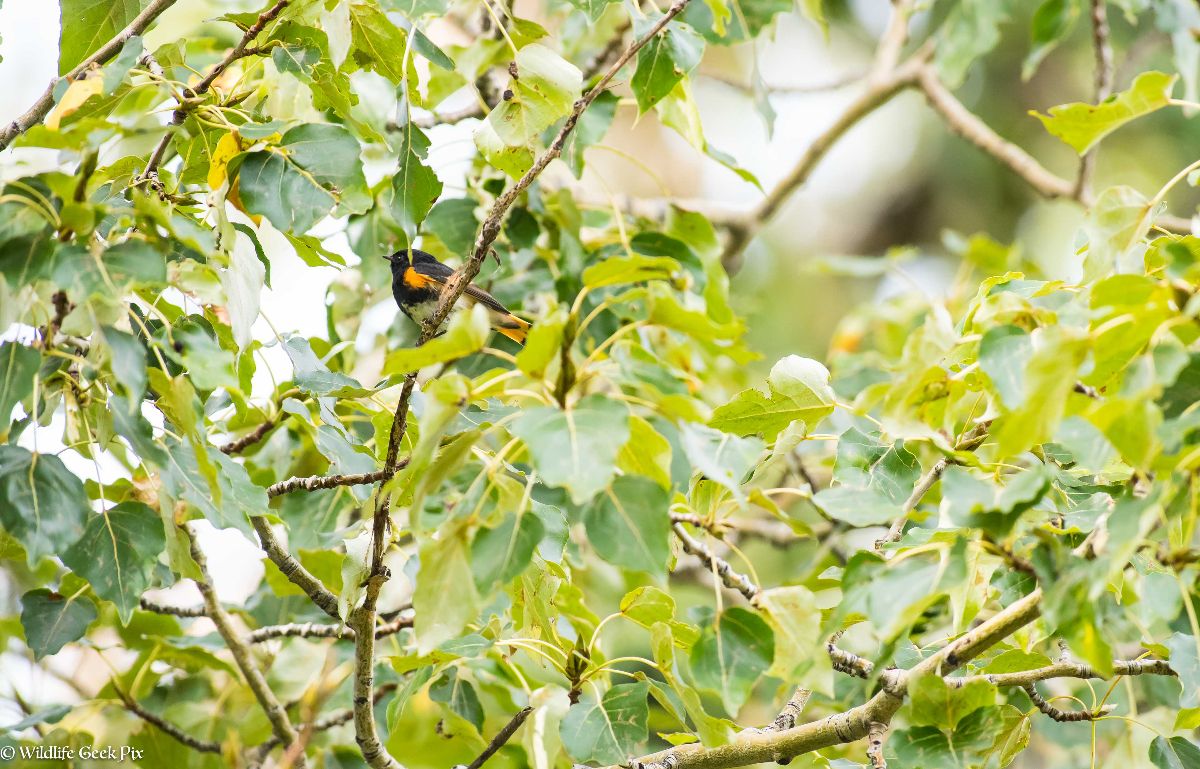
Another shot of the male American Redstart. [exif id=”14845″]
Next Post: We head down to the Fish Creek Park headquarters and the boat launch.
